Lessons from Lockdown
Analysis and recommendations for the future

Foreword
Professor Francesca Gains
All our lives have changed fundamentally and irrevocably since the spread of the new, highly infectious and deadly coronavirus (COVID-19). As infection spread across communities, countries and continents, the UK like elsewhere went into lockdown. City streets and supermarket shelves emptied and whilst key workers kept vital services going, many of us discovered new online platforms to keep in touch with family, friends and colleagues. Throughout the first 100 days of lockdown, the Government’s daily coronavirus press briefings made epidemiologists and statisticians of us all.
The policy landscape, locally, nationally and internationally has fundamentally changed in the weeks since lockdown began in March. Yet many of the issues which confronted policymakers in the immediate stages of lockdown, and the urgent policy problems which the pandemic has exposed, were agendas where the University was well placed to contribute – indeed to continue and deepen our existing policy engagement.
As the post lockdown period got underway, Policy@Manchester published blogs from researchers across our Faculties. The blogs in this collection aim to bring research insights and policy solutions to the attention of our key stakeholders to help in their work of finding policy solutions to a post COVID-19 world. Whether it be research directly addressing the scientific, medical and public health challenges of tackling COVID-19; the trade-offs between economic activity and sustainability; the digital challenges raised by moving life on line; the ongoing contribution of our science and engineering research to developing the regional economy; or on the economic, societal and political issues facing policymakers locally, nationally and internationally around how the world of work, leisure, and governance might change. Crucially, our research helps to bring together how scientific and technological developments and human behaviour interact across all policy agendas.
As we move into a phase of learning to live with the impact and consequences of COVID- 19, we hope you find this collection of lockdown blogs useful. We would be glad to follow up so do please get in touch with us.


Timeline: A glimpse through the pandemic

What COVID-19 tells us about the value of human labour
Abbie Winton and Professor Debra Howcroft
In the wake of the coronavirus outbreak, a radical reassessment of what is considered ‘key work’ has taken place. For many key workers, however, this status is not reflected in their salary, employment rights, or social perception. Here, Abbie Winton and Professor Debra Howcroft, from the Work and Equalities Institute, discuss the disproportionate risk/reward equation key workers – particularly women – face, how the COVID-19 crisis will impact their future, and what policymakers can do to address inequalities at work.
On 19 March, the UK government published a list of ‘key workers’ considered to be critical to the provision of services during the COVID-19 crisis. These workers amount to 7.1 million adults across the UK, the majority of whom are female. Many ‘key workers’ receive the National Living Wage, the minimum wage set by the government for over 25’s. These workers are vital for society to function, yet the degradation of the employment relationship illustrates how the value of labour is not dependent on an impartial measure of supply and demand but is constructed by the social context within which it is embedded. In light of the current crisis, a radical re-think of how labour is valued – both socially and financially – is needed, leading to policies which ensure that key workers are paid and protected in a way that reflects their critical contribution to society.
Gendering of ‘key workers’
Of the designated ‘key workers’ in the UK, 60% are women (compared to 43% of workers outside of these industries). As a consequence, 77% of workers in occupations identified as being at ‘high-risk’ of contracting COVID-19 are also women, underlining their role in frontline work.
The predominance of women as ‘key workers’ is a result of the historical normalisation of ‘women’s work’, and persistent structural inequalities within waged and unwaged work. Numerous occupations remain largely feminised and are often valued less than occupations associated with ‘men’s work’, despite requirements for equivalent skill levels (eg social care and construction work require comparable NVQ levels).
Feminist theory informs us that how society perceives, and constructs skills is a pervasive determinant of value as opposed to the actual skill required to do the job. Feminised roles have long been deemed ‘unskilled’ or ‘low skilled’ as they are seen as an extension of unwaged work in the domestic sphere (eg health, social and child carers, cooks, cleaners). Therefore, although many of these feminised ‘key roles’ provide a critical service, they continue to be undervalued.
The mismatch of skill and value
While some key workers are employed in ‘skilled’ professional roles, many are categorised ‘unskilled’ or ‘low skilled’ according to Standard Occupational Classifications (eg food production, sales and delivery, social and other healthcare roles). While the social value of certain roles fluctuates depending on the needs of society at any given time, the financial value of work remains bounded by the social perception of the skills which the role demands. This bias which shapes evaluations of skills is likely to deepen inequalities and the way in which work is valued.
What is the future for ‘key roles’?
While some suggest that COVID-19 generates uncertainty for future investment in automation, a survey of employers shows they are accelerating plans to automate roles while workers stay at home. Future uncertainty is of concern for women as they are likely to be disproportionately impacted by processes of automation given their concentration in particularly vulnerable roles, such as sales and cashier roles.
Considering the example of food retail, the demands of the crisis has demonstrated the value of human labour, as well as the importance of skills which are commonly overlooked and undervalued. For example, activities which require non-cognitive skills (shelf-stacking, picking and packing), or require an element of ‘human-touch’ (helping elderly and vulnerable members of the public, monitoring social distancing, intervening in practices of bulk buying) remain difficult to automate.
In the UK, to cope with increases in demand, 45,000 temporary jobs have been created in food retailing and existing roles have intensified, both in terms of consumer expectations and working-time (exemplifying many ‘extreme work’ characteristics, such as extended working hours, increase in demands for multi-tasking, and the regulation of emotion of both colleagues and customers). In the US, 100,000 new jobs have been added in Amazon’s fulfilment and distribution network, even though many of its warehouses rely largely on robotics systems. Therefore, while employing people often remains cheaper than investing in new technology, certainly in the short-term, a lesson we have learnt is that technology alone cannot save us in a crisis.
What policymakers can do
Given the increasing prevalence of precarious working conditions (such as zero hour contracts, underemployment, and unstable hours) full employment rights and adequate social protection should be extended to all key workers. Gendered assumptions around skills in the workplace require an overhaul, so that traditionally feminised occupations receive appropriate recognition and recompense.
In parallel to this, a re-assessment of social value is required so that key workers operating on the front-line, many of whom are risking their health, are fairly rewarded by pay which reflects this. In times of crisis we see how those who are critical to the functioning of society are largely undervalued and often low-paid. The public response to ‘clap for carers’ symbolises an appreciation of social value from grassroots level, which will hopefully influence policymakers and result in a levelling up that is long overdue.
The Standard Occupational Classification needs to be re-evaluated in line with technological advances shaping both the supply and demand of skills, with a focus on the way in which skills which defy automation are valued. Investment in technological change is to be welcomed, but on condition that potential productivity gains are redistributed with a view to creating a more equal society.
Originally published 7 April 2020

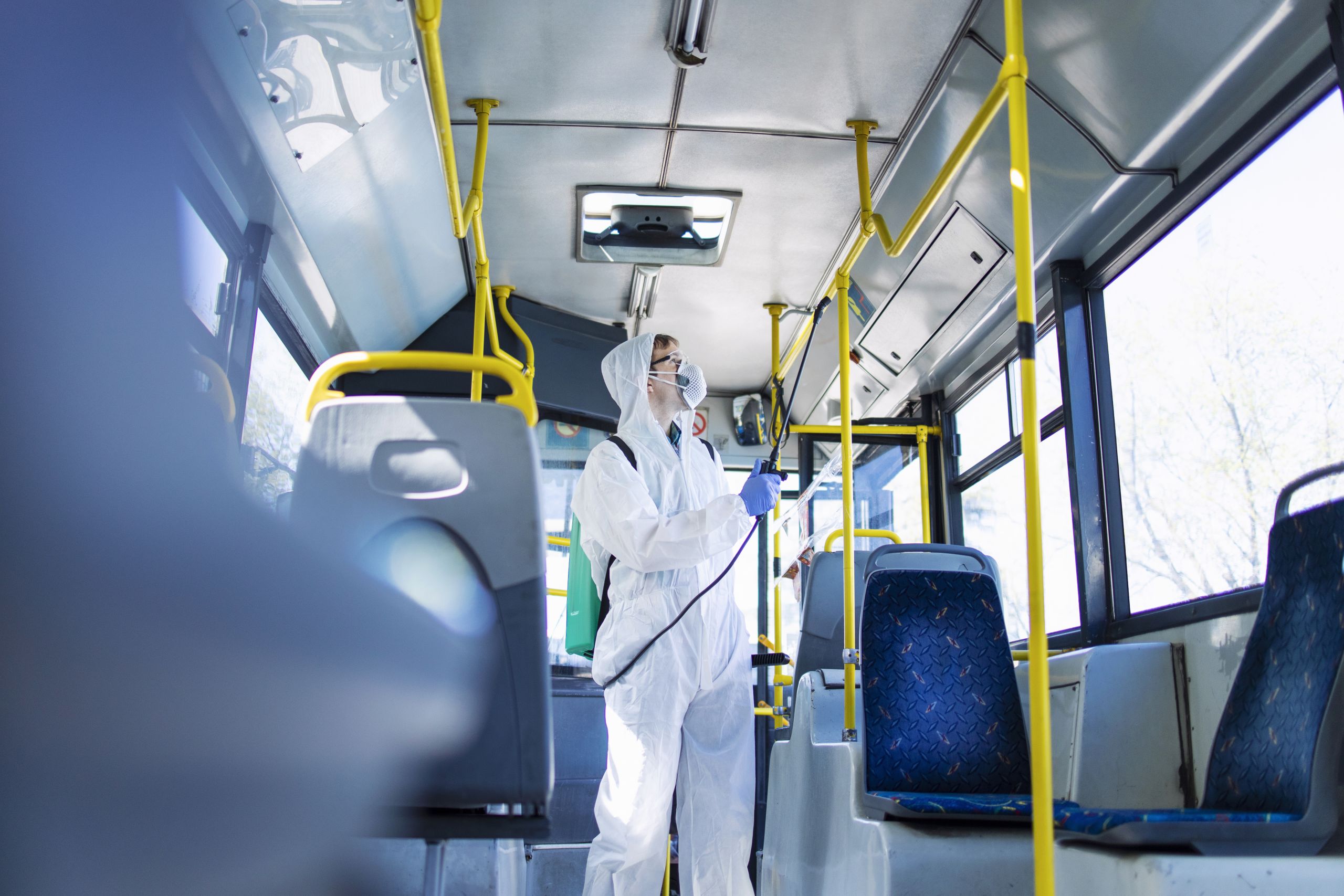
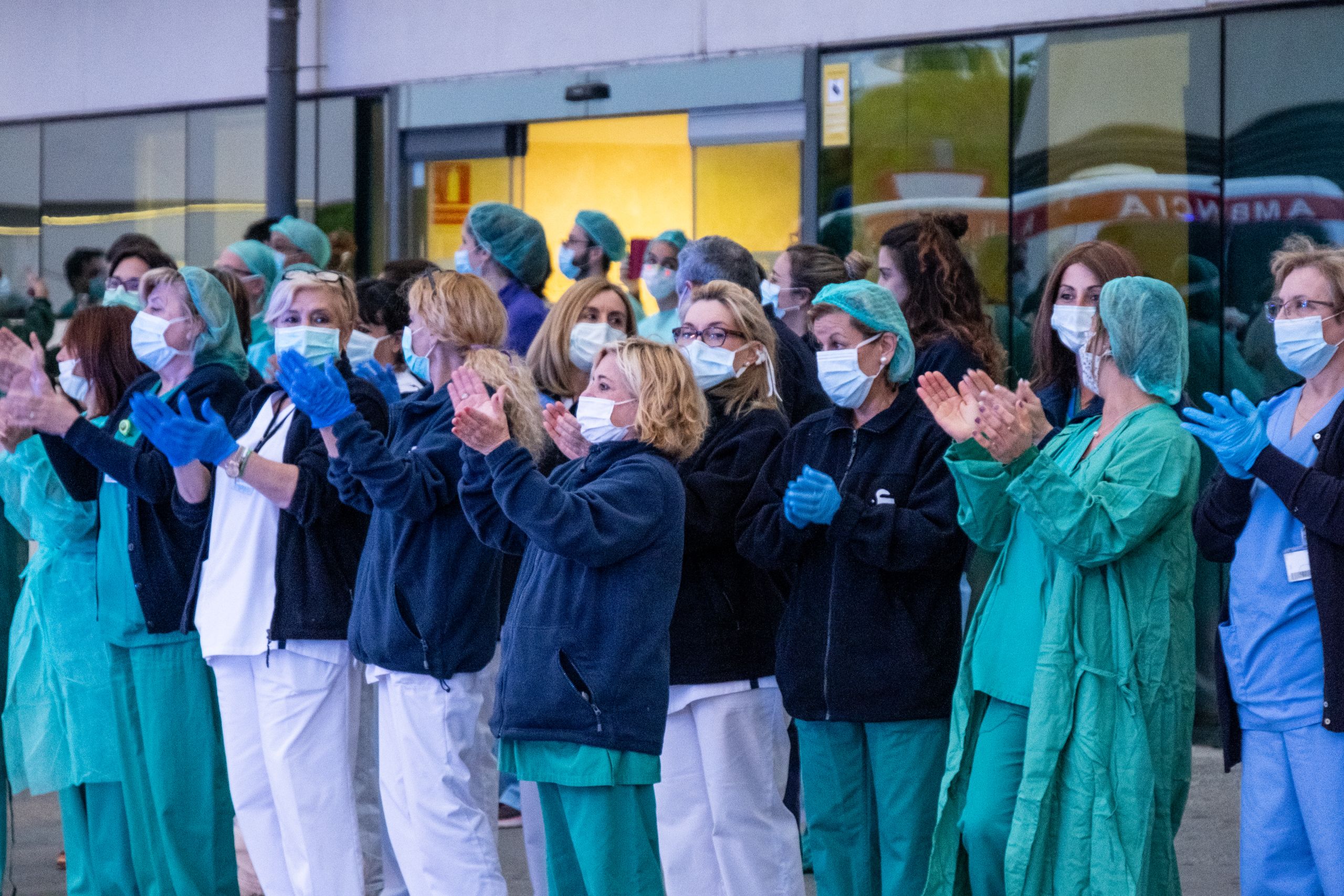
Planning and managing service delivery in the NHS: looking to the future
Professor Kath Checkland
COVID-19 has reinforced the necessity of effective planning of health services, treatment and prevention capacities in primary and secondary care, and both protecting and optimising our healthcare workforce. Here, Professor Kath Checkland reflects on the renewed centrality of “commissioning” to health policy debates that will follow in the wake of the pandemic, and draws lessons from research here at Manchester for the policymakers and practitioners who will need to address this debate in the months to come.
The organisation and management of the NHS can seem to be a dry subject, full of esoteric language and highly technical details. Acronyms abound, with NHSE overseeing CCGs which in turn support PCNs whilst contributing to ICSs, with CQUINs offering incentives – with the LTP setting out the strategy for the next 10 years. And if you understand that sentence then you have clearly spent far too much time reading about government policy!
However, one thing that the current crisis has taught us is that the oversight and management of the NHS matters. Planning – usually known in the NHS as commissioning – is the function which ensures that the right services are available for the right people at the right time. Providing sufficient capacity in both hospitals and community services, and co-ordinating between different types of care providers to make sure that patients experience joined up services require complex systems and oversight. As the NHS and social care services adapt to and recover from the pandemic, it is important to consider how planning works, and how it may need to change.
Development of organisation and planning from 2012
In 2012 a vast reorganisation of the NHS took place which affected all parts of the system. Our team has been researching these changes for the past 8 years and in a recently published book we offer a comprehensive overview of the changes made and their impacts on the governance, accountability and functioning of the health system in England.
The Health and Social Care Act 2012 distributed responsibility for commissioning services to a much wider range of organisations, and required service providers to compete with one another to a greater degree than in the past. Public health was moved outside the NHS to Local Government, and a new Arm’s Length Body, NHS England, was established to oversee the service as whole. The result was a significant fragmentation of care planning across the NHS, with some emerging evidence of a potential deterioration in the provision of some types of care.
Less than 10 years after its enactment, many of the principles underlying the Act have been discarded, with a move away from competition and a new focus on collaboration and integration of care. However, the legislative structures put in place in 2012 remain, and the new collaborative structures which are being built rest upon agreements and partnerships rather than being enshrined in statute. Our research found that confused lines of accountability could be a problem, and that skilled managers with a good knowledge of their local area were vital in the planning process. The fragmentation which resulted from the Health and Social Care Act was at least partially mitigated by the hard work of skilled commissioning managers who, in their words, ‘knitted the system back together’. We also observed that different functions require activity on a different scale, with planning of primary care services needing a much more local focus than larger scale hospital reorganisations and collaborations to deliver more specialised services.
The building blocks of the more collaborative system set out in the NHS Long term Plan of 2019 include collaborations across populations of 1-3 million, known as Integrated Care Systems (ICS), and local neighbourhood collaborations between GP practices and other community-based services, known as Primary Care Networks (PCN). ICSs are focused upon the big issues of resource distribution between hospitals and the best way to organise services such as emergency care and specialist surgery. PCNs are focused upon how best to provide services outside hospital, with GP practices working together with other community services to provide comprehensive services and hopefully keep people out of hospital. Clearly the current pandemic will have affected these developments, with collaboration at all levels even more important in the current emergency.
Organisation and planning: lessons for the future
So what can we learn from our research to date which may be relevant to regional collaboration (in Integrated Care Systems) and in local neighbourhood working (in Primary Care Networks) as they develop and work together to manage the crisis?
The NHS which emerged from the Health and Social care Act 2012 is a very complicated one, with overlapping layers of regulation and accountability. The Covid-19 crisis has led to a centralisation of many aspects of NHS decision making, and this may well be appropriate for short term crisis management. However, as the NHS returns to normal it may be that this is an appropriate time to consider the level within the system at which different types of decision are made. Our studies have raised the question as to whether the regional level of co-ordination should be put on a statutory footing, as used to be the case with Strategic Health Authorities. The different pace and impact of the pandemic in different areas suggests that a regional tier of management with a clearly defined role, responsibilities and lines of accountability may offer considerable advantages in the recovery period and in the longer term.
Our research highlighted the complex regulatory structures to which NHS organisations are subject, from national inspection regimes to the application of EU law on procurement. The current crisis has led to the short term suspension of many regulatory requirements, such as individual practitioner revalidation and CQC inspections. It is much easier to increase regulation than it is to reduce it, and this may be an opportunity to critically examine each element of the regulatory system to consider how and in what circumstances it adds value or prevents avoidable harm, only re-introducing those where a clear rationale can be described.
Our research has shown that the planning and management of primary care requires detailed local knowledge, and the pre-Covid 19 push for Clinical Commissioning Groups to merge and cover much larger populations may make this more difficult. In the aftermath of the pandemic there will be an opportunity to critically examine how local services adapted and what factors helped them to do that. A measured consideration of what planning functions need to take place over what geographical scale would be of value, and could inform future decisions as to optimum CCG size.
One of the drivers of CCG mergers is the reduction in management costs. All of our studies have shown that high quality management is of vital importance in the delivery of high quality NHS services, and that personal knowledge and relationships underpin the planning and delivery of these services. Valuing managers and the relationships that they have built should be the cornerstone of the NHS as it builds for the future.
Originally published 26 May 2020
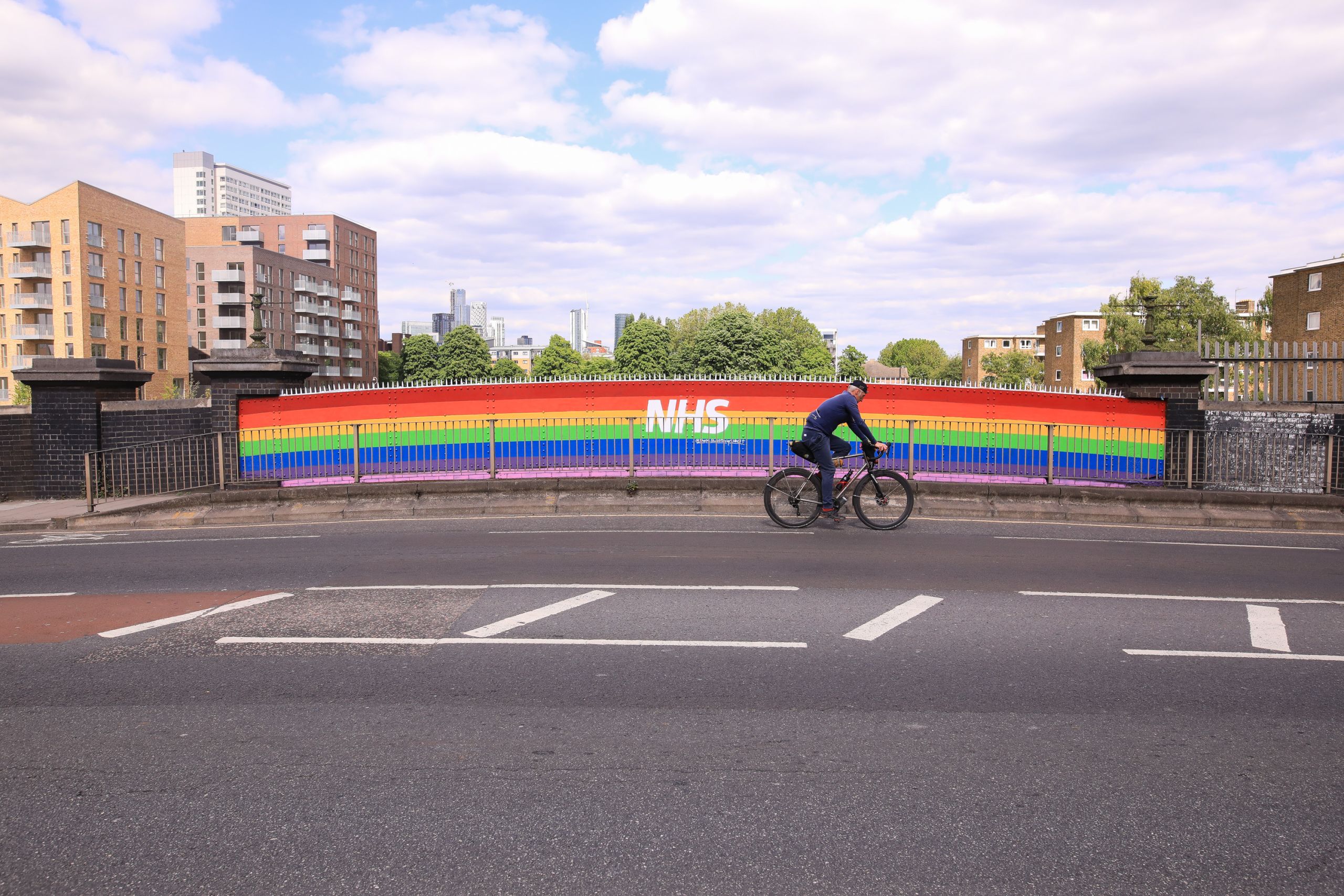
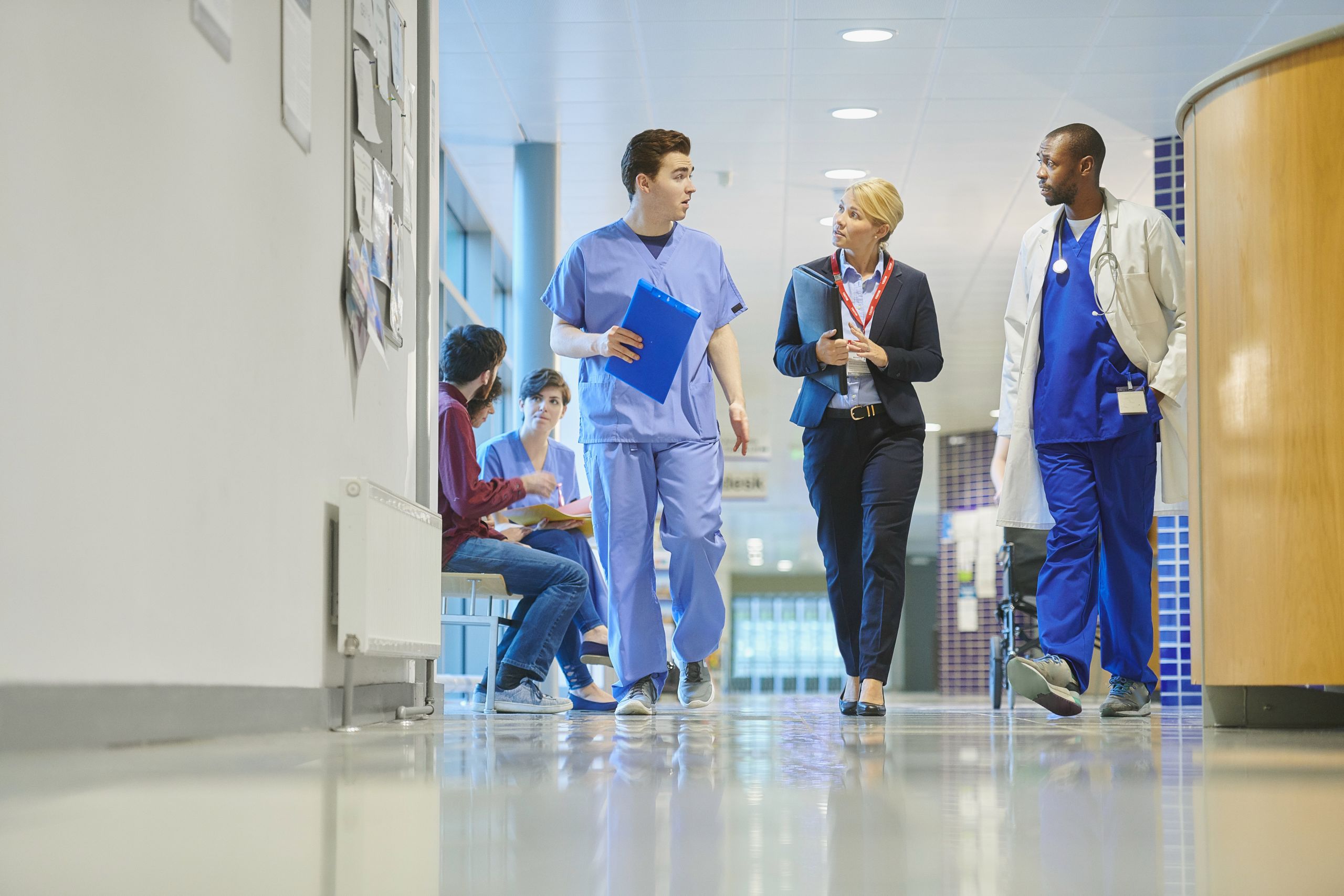

Furlough, fraud and the Coronavirus Job Retention Scheme
Pete Duncan and Professor Nicholas Lord
The Government-implemented Coronavirus Job Retention Scheme (CJRS) supports companies in their attempts to ride out the COVID-19 pandemic, permitting them to place employees on a temporary leave of absence known as ‘furlough’, and claim state aid to pay furloughed staff either 80% of their usual wages or up to £2,500 per month, whichever amount is lower. Whilst furloughed, employees are not permitted to conduct work for their employer. Pete Duncan and Professor Nicholas Lord discuss how dishonest CJRS claims might be made and how the Government can improve and make best use of the limited data they have to better protect public funds from fraudulent manipulation.
Whilst it comes at great cost to the taxpayer, the Job Retention Scheme provides (some) companies and workers with much-needed financial protection. It provides a lifeline to businesses whilst they tread water, ready to spring into action when the time is right. A number of drawbacks and ambiguities have been raised, but one downside that has been minimally discussed is the opportunity the Scheme creates for defrauding the state.
Figure 1. As the Job Retention Scheme increases in cost for the Government, stopping potential fraud is of paramount importance
Furlough frauds
Fraud can be broadly defined as dishonesty or deception for illegal gain, and usually takes the form of a false representation, an abuse of position, or a failure to disclose information, as covered in the Fraud Act 2006.
For instance, an employer claiming CJRS aid for furloughed staff, but encouraging or coercing those employees to continue working when they should not (perhaps through manipulation or the threat of job losses), would constitute fraud by false representation. In this way, deviant employers transcend ‘business as usual’ into a realm where business continues as normal but usual staffing costs are drastically reduced. This would be especially easy to organise in small companies with few co-offenders and little customer interaction.
Similarly, an employer claiming aid via the Scheme but withholding some (or all) of the received funds from their employees would constitute an abuse of their specific position of power, as they would be promoting their business interests at the expense of the employees they are obliged to safeguard. This might be more difficult to organise as victimised employees would be more likely to report the fraud.
These frauds can clearly harm Government and tax payers (as public funds are illegally obtained), as well as individual employees in need of financial support. There are also likely to be harms to wider business and social interests, as ultimately these monies will be repaid through taxes and trust in business may be eroded.
(In)credible oversight?
We expect that most employers will not pursue fraudulent claims, either on the basis of social responsibility, or through more instrumental mechanisms to prevent furloughed employees from working (eg by cutting off access to employees’ email accounts). However, it is without doubt that in some organisational contexts and with the absence of credible oversight, motivated offenders will take the fraudulent opportunities the Scheme has created. The Government has implemented some interventions to safeguard the public purse from this exploitation, but there are a number of issues that need to be considered.
As of 29 May, the anonymous CJRS fraud reporting system had received nearly 1900 reports of suspected manipulation. Whilst some reports could be duplicates entered by multiple individuals with knowledge of a single fraud, the true extent of CJRS manipulation is likely much higher due to the numerous barriers affecting an individual’s likelihood to report, even when they have been directly victimised.
For instance, even if anonymity was assured (which seems hard to guarantee, especially in smaller organisations), sanctions for companies found to be making fraudulent claims to the CJRS could end up harming those anonymously blowing the whistle. With predicted rises in unemployment on the horizon, potential whistle-blowers might decide not to report for fear that Government sanctions might put their employer out of business (especially if that business was struggling before the pandemic). For reasons such as this, in its current guise the CJRS reporting system cannot itself be considered credible oversight to safeguard against furlough fraud.
The Government has also attempted to control furlough fraud by indicating claims might be audited by HMRC, but it is unclear how this process will work. The sheer volume of demand the Scheme has attracted means auditing all claims would likely be an improbable and costly endeavour.
Improving investigations of fraud
Furthermore, the majority of fraud investigations will be conducted retrospectively as HMRC have suspended some tax investigations due to capacity issues created by implementation of the CJRS. This is inherently problematic as attempting to recoup funds lost through fraudulent claims is costly, uncertain, and politically undesirable if large fines risk putting firms out of business (amendments to the Finance Bill 2020 give HMRC powers to fine persons deliberately making incorrect claims and to hold company officers liable).
HMRC’s retrospective response should integrate harm assessment with evidence and intelligence-led investigation. First, those reports indicating the greatest harms to employees and the public purse should be prioritised. Alongside this, rigorous analysis of data on known CJRS frauds to build an understanding of associated red flags will enable HMRC to efficiently and systematically identify other reports that are more likely to be fraudulent. For instance, are there common features or patterns evident in those cases? Are certain sectors or industries more susceptible to furlough fraud? Such an approach would, of course, only build an understanding of the frauds that are actually reported. Second, therefore, tip-offs from whistleblowers should be incentivised as these ‘insiders’ are likely to provide the most credible insights into company deviance. Third, leniency should be offered to early disclosers who report their frauds to HMRC.
The CJRS has recently been extended until October. This gives the Government more time to consider how it can better collect and make best use of data to develop a systematic and effective procedure for investigating furlough fraud once economic activity has returned to some degree of normality.
Originally published 22 June 2020
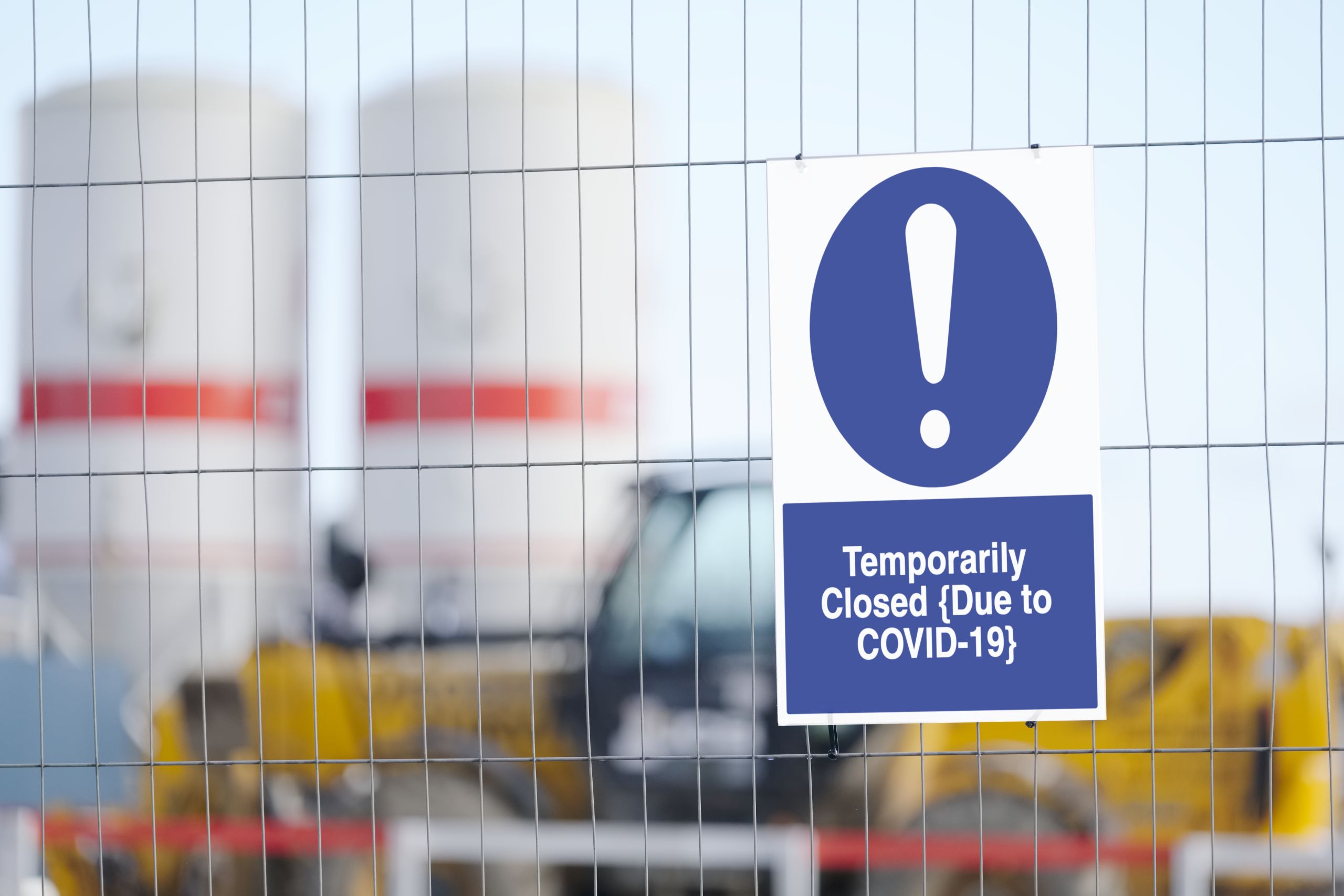
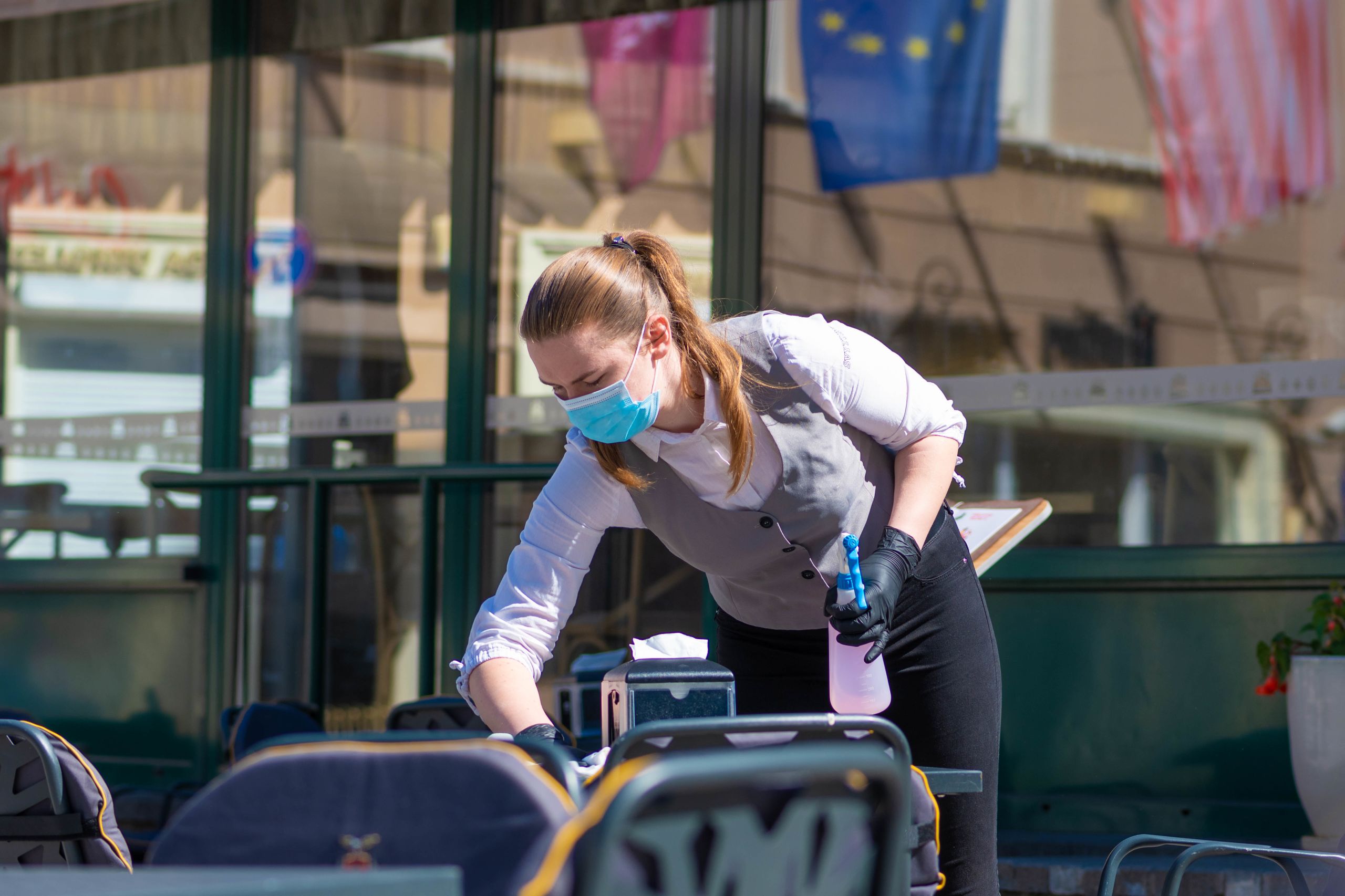
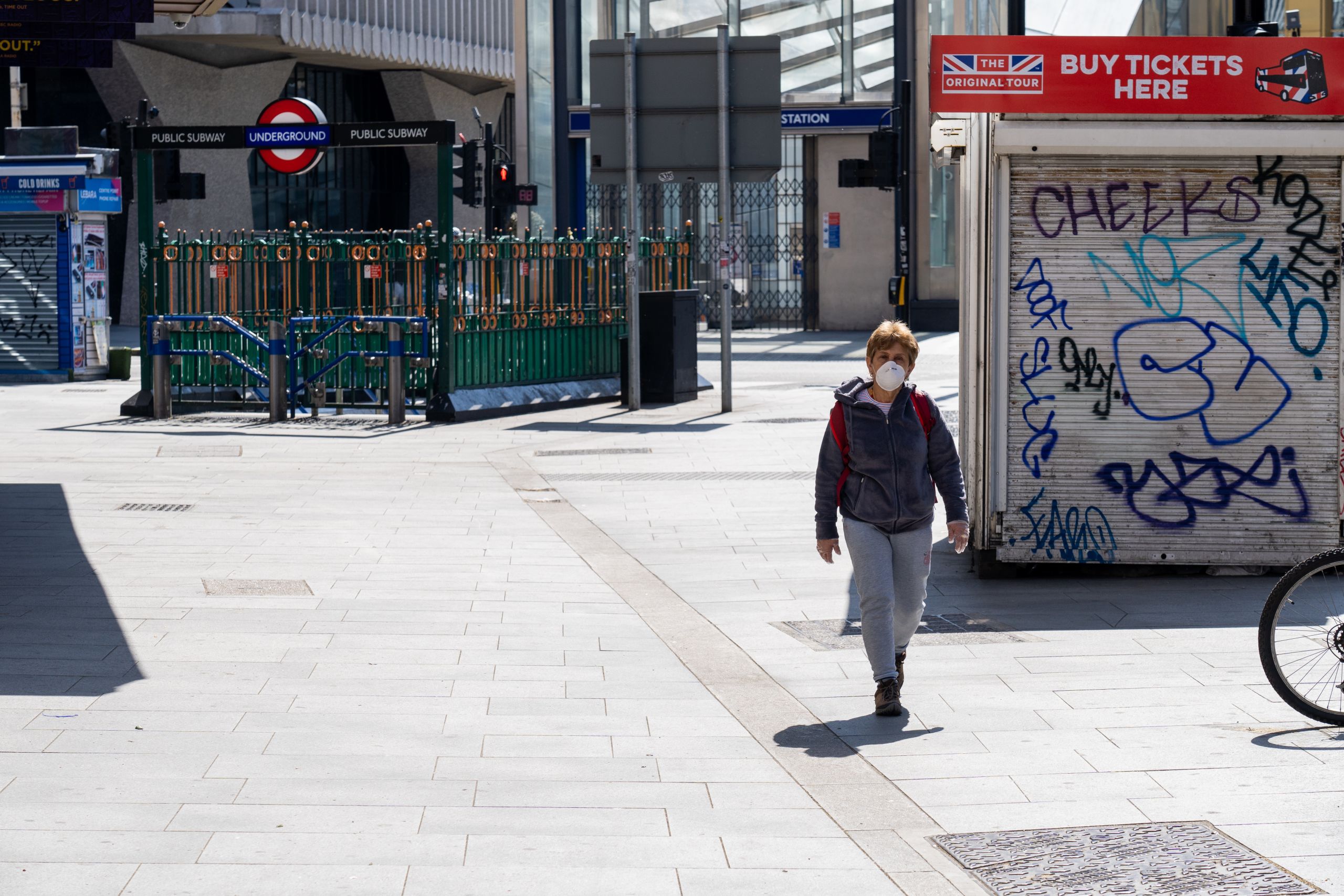
Prioritising play to promote wellbeing
Cathy Atkinson and Marianne Mannello
The United Nations Convention on the Rights of the Child Article 31 states children have the right to access play, rest and leisure. With the uncertainty caused by the COVID-19 pandemic, play opportunities are vital to helping children make sense of their experiences, problem-solve, reconnect with their peers, and promote their own wellbeing. Cathy Atkinson, Senior Lecturer in Educational and Child Psychology at The University of Manchester, and Marianne Mannello, Assistant Director of Play Wales consider the important role of children’s play during lockdown in promoting positive mental health, and discuss the ways schools can promote play when they reopen.
Why play is important to children’s wellbeing
Last year, before the current lockdown situation, researchers at The University of Manchester, alongside specialist partners, developed a position statement for the British Psychological Society highlighting the importance of play in helping children deal with uncertainty and challenge, regulate emotions and experience fun, enjoyment and freedom. In an accompanying video, children explained why they valued play and how important it was to them.
Play can help promote wellbeing in terms of helping children to:
· Make sense of what has happened to them;
· Deal with emotional upset and regain control of their lives;
· Experience normality and pleasure during times of upheaval, loss, isolation and trauma;
· Foster resilience through promoting emotional regulation, creativity, relationships, problem-solving and learning.
Play and wellbeing during lockdown
Play has not stopped for lockdown and is as important as ever, as it is children’s way of supporting their own health and wellbeing. Children will find opportunities for play, even in the most adverse of circumstances and parents can support this through:
· Time – enabling children to play freely and valuing play;
· Space – creating opportunities for play using everyday objects, and recognising that play can sometimes be noisy and boisterous;
· Permission – acknowledging that it is okay for older children to play, for children to play alone, and for children to decide how they want to play.
However, children’s opportunities for play will be affected by their family’s circumstances. For example, in situations where parents are expected to work, where there is limited indoor or outdoor space, or stress from loved ones being distant or unwell, opportunities might be compromised.
Transition back to school
There have been recent calls by leading academics for schools to prioritise play when they reopen. This may be particularly important for children who have experienced difficult circumstances during lockdown, such as parental separation, loss, grief or trauma.
To highlight the importance of play, the UN Committee on the Rights of the Child published General Comment 17, highlighting how play provides a means by which children can externalise difficult, unsettling or traumatic life experiences and offer specific guidance to schools as to how this might be achieved.
Before the coronavirus outbreak, concerns about diminished opportunities for play, especially for vulnerable groups such as children with special educational needs and disabilities, and children living in poverty had already been highlighted because curriculum pressures have led to reduced opportunities for play in schools.
Children cannot learn effectively when they are stressed or overwhelmed. Studies of brain development indicate that children who have experienced trauma find it difficult to maintain attention, remember things, manage behaviour and regulate emotions, and can have mental health issues in adolescence and adulthood. There is continued uncertainty about exactly when children will return to school and this may well vary across the different countries and regions of the United Kingdom. However, we would ask that when schools do reopen, that it is recognised that this is not the time to play ‘curriculum catch-up’. Children need time to readjust to school life and reconnect with teachers and peers, rather than worrying about learning.
How schools can support wellbeing through promoting play
The challenge now for the Government and devolved nations is to balance reopening schools and keeping children, parents and teachers safe, whilst maintaining the benefits of play to wellbeing. In light of guidance from the Office for National Statistics, that children are just as likely to catch the virus, any planned return would need to be handled extremely carefully. But extreme physical distancing measures such as those pictured in France last week will inevitably do more harm than good to already vulnerable children.
We suggest that the Departments for Education across the UK could produce short-term guidance for schools to help them support children’s wellbeing and physical safety. This guidance could include UN advice, as noted in General Comment 17, in the following four areas to promote children’s right to play.
1. Physical environment of settings – The playground environment can be adapted to enable safe, creative play, and make the school more play-friendly. Schools can use fun equipment and/or visual referencing to promote physical distancing. Where feasible, could the playground be available for the whole day to enable extended outdoor access for more children, or could the school field or forest school site be better utilised?
2. Structure of the day – The guidance could support schools to find ways to develop a more responsive and flexible structure to allow teachers to adapt to the needs of their pupils and provide more time and opportunity for outdoor play and learning.
3. Curriculum demands – Given what we know about the impact of trauma and upheaval on learning, we would recommend that curriculum demands on children and teachers be reduced, to allow opportunities for play, emotional growth and social connection. Child-led learning experiences which facilitate free play could ensure no child gets left behind. As cultural and arts activities have been restricted during lockdown, how can these be reintroduced via school curricula?
4. Educational pedagogy – The UN describes the importance of learning environments being active and participatory. Schools can make playful activities central to learning, for older children as well as for those in the early years. Recent research from The University of Manchester found that where the boundaries between schoolwork and play were more ‘blurred’, children felt a greater sense of control over their own learning experience.
Playing is the most natural and enjoyable way for children to keep well and be happy. It is their way of supporting their own health and wellbeing. It is vital that efforts to improve wellbeing in schools should focus on providing sufficient time and space for play.
The UN states that, for children, play “can restore a sense of identity, help them make meaning of what has happened to them, and enable them experience fun and enjoyment.” Recognising the importance of play at this point in time could be an enormous step forward, in terms of protecting the mental health and wellbeing of our children, and of future generations.
Originally published 21 May 2020
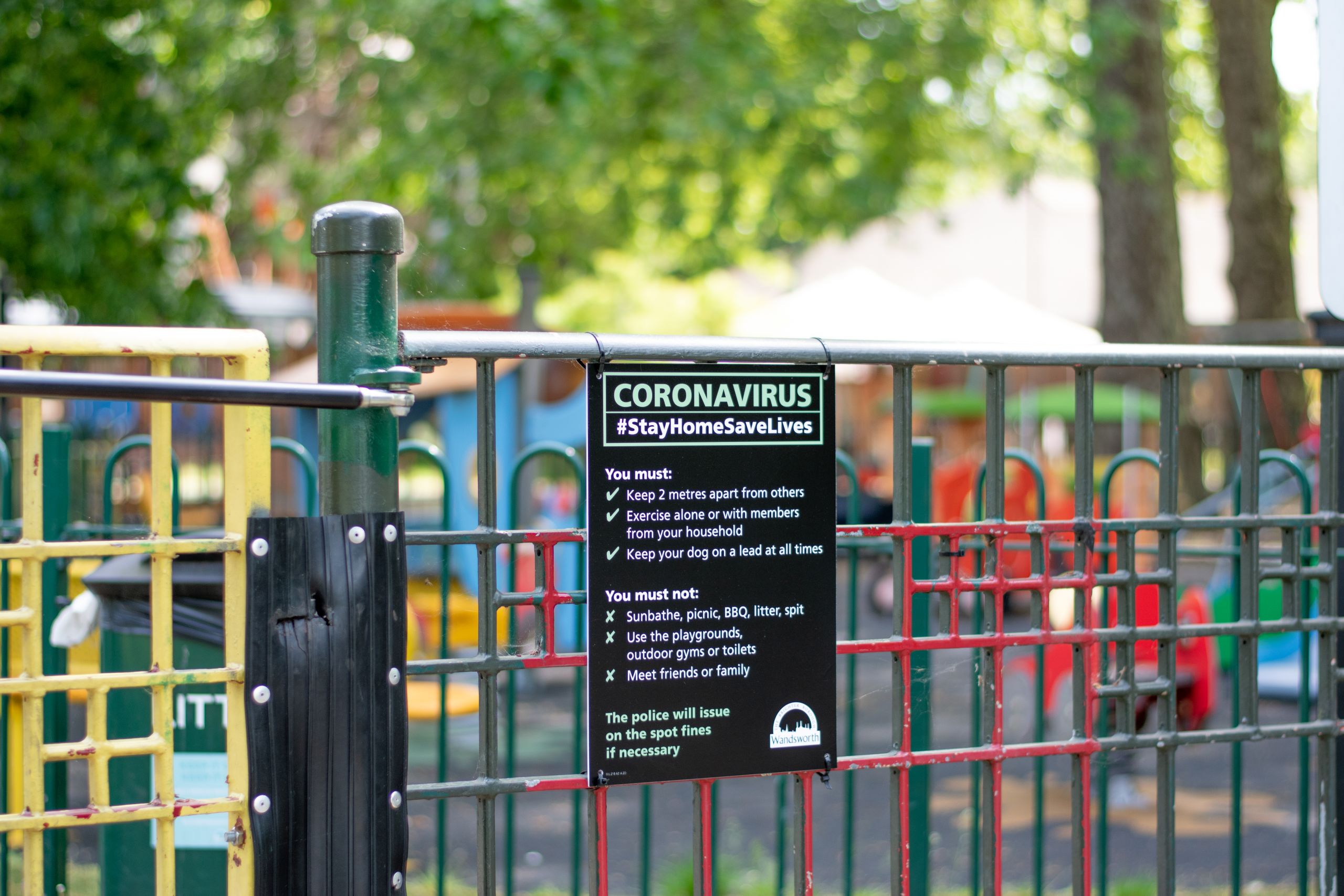


Locked down by inequality: Why place matters for older people during COVID-19
Christopher Phillipson, Camilla Lewis, Tine Buffel, Patty Doran and Sophie Yarker
Older people have borne the brunt of deaths from COVID-19, whether in hospital or in care homes. At the same time, the coronavirus emergency sits alongside a crisis in many of the communities in which older people live. Here, Chris Phillipson, Camilla Lewis, Tine Buffel, Patty Doran and Sophie Yarker examine how the pandemic will affect older people living in areas of multiple deprivation.
Where you live matters greatly for your quality of life in older age; it matters also for whether you are protected from COVID-19. The Marmot Review, examining changing health inequalities between 2010-2020, highlighted the increase in deprivation affecting many parts of England. Area deprivation is also associated with higher levels of social exclusion in later life, for example to services, participation in leisure activities, and relationships with friends and family. Quality of life will also be affected by housing conditions – especially important given restrictions imposed by social distancing.
Nearly three-quarters of a million people 75 and over live in what are termed ‘non-decent homes’ – a higher proportion than any other age group. The most common reason is the presence of a serious hazard posing a risk to the occupants’ health or safety, such as inadequate heating or a fall hazard. Over a million over- 55s are living in a home with at least one such problem. It is hardly surprising that the Office for National Statistics (ONS) has reported that those living in the poorest parts of England and Wales are dying at twice the rate from COVID-19 compared with those in more affluent areas.
Figure 2. Deaths in the most deprived areas are considerably higher than in more wealthy neighbourhoods
Double lockdown
As the impact of coronavirus grows, older populations who are social distancing may be doubly locked down – suffering the effects of social isolation whilst living in places affected by substantial cuts to public services. This challenges us to ask fundamental questions about the changing nature of our communities, and the responses necessary to assist older people during the pandemic. With the likely continuation of social distancing rules in some form, the implications for neighbourhood support requires urgent attention. The danger at the present time is that the pressures facing communities are being over- simplified through two competing narratives:
· The first portrays a romanticised view of neighbourhoods coming together against a ‘common enemy’, symbolised by the weekly applause for NHS workers, along with the deployment of an army of volunteers stepping forward to support vulnerable groups.
· The second highlights reports of outbreaks of unrest caused by the constraints of the lockdown, suspicion of neighbours flouting the guidelines, and selfish behaviour in supermarkets.
It is certainly the case that many social groups have emerged to provide support for those whose isolation has been compounded by COVID-19. In some cases, this builds upon existing voluntary and mutual aid organisations which have replaced services from the local welfare state. But it is important not to ignore evidence about the long-term changes affecting communities. Roughly at the same time as COVID-19 started to spread across the country, the Office of National Statistics (ONS) provided an update on its review of trends in social capital in the UK. The results highlighted significant developments over the past decade, with evidence of less positive engagement with neighbours, less help being given to groups such as older people, and a reduced sense of belonging to the communities in which we live.
The findings from the ONS should not come as a surprise: the last ten years has seen an upsurge in inequalities within and between neighbourhoods in the UK, with zones of affluence and poverty existing side by side. But the majority of attention has focused on growing disparities between income groups, rather than the impact on relationships in everyday life. COVID-19 and measures such as social distancing, will ‘stress test’ the ability of communities to work together to protect vulnerable groups. The pandemic underlines the degree to which social processes relating to inequality, discrimination and racism contribute to the distribution of illness and deaths caused by COVID-19. Social interventions in marginalised communities are now urgently required to strengthen defences against subsequent waves of the virus.
Community development policy
We would argue for a new community development policy to assist the most deprived neighbourhoods in the UK. The policy will need to comprise:
Funding: Disinvestment in social infrastructure has resulted in the closure of libraries, day care and community centres. Such resources are essential for providing informal spaces for people to meet, and both support and empower vulnerable groups. Deep cuts to local authorities over the past decade have resulted in significant financial pressures on all public services. Local authorities suffered a 49.1% real terms reduction in central government funding from 2010 to 2018.
Areas of multiple deprivation must be prioritised in future government spending. Such funding will need to be complemented by a national strategy to tackle health inequalities, drawing on lessons from the Marmot Review, and studies showing the detrimental impact of neighbourhood deprivation on older people’s quality of life. Targeting older people at risk of isolation, by focusing resources on socially excluded places, must be an essential part of the government’s recovery strategy.
Locally based partnerships: Interventions which have the most impact are those designed to meet the specific needs of communities, in situ. A one-size-fits-all approach to community must be rejected, in favour of tailored support to meet the needs of different groups through encouraging dialogue between local residents, voluntary organisations and the public sector.
Local authorities need to give urgent attention to developing new models of neighbourhood working as part of their recovery strategies from the pandemic. Such ways of working will encompass a variety of approaches, for example: advocacy, befriending, counselling, and organising social activities. These types of support have become essential in the current crisis and need to be strengthened over the longer-term. However, given the extent of the crisis affecting communities, a broader range of activities at a neighbourhood level should be encouraged, including: providing food co-ops, home repair services, financial advice, and protecting people from various forms of abuse.
Challenging discrimination: Coronavirus is disproportionally affecting groups based on age, ethnicity, gender, disability, and sexual orientation. Continued social distancing is likely to reinforce ageism and age-based divisions within communities. The number of deaths (direct and indirect) in care homes from COVID-19, and the delay in recognising the extent of the disaster, illustrates the extent of the crisis in social attitudes towards ageing. Older people are increasingly presented as a burden in relation to the economy, pensions and social care – an issue which needs to be tackled at all levels of society.
We support the call from the British Society of Gerontology and the Centre for Ageing Better for a fundamental culture shift to challenge negative attitudes towards older people. Given the risk for greater age segregation occurring as a result of COVID-19, it is essential to foster contact between generations, challenge ageist stereotypes, and highlight the diversity of experiences in later life. We also urge the government to work with national and local equalities organisations to support older people who are facing intersecting pressures relating to ageism, racism, and sexism.
Originally published 1 June 2020


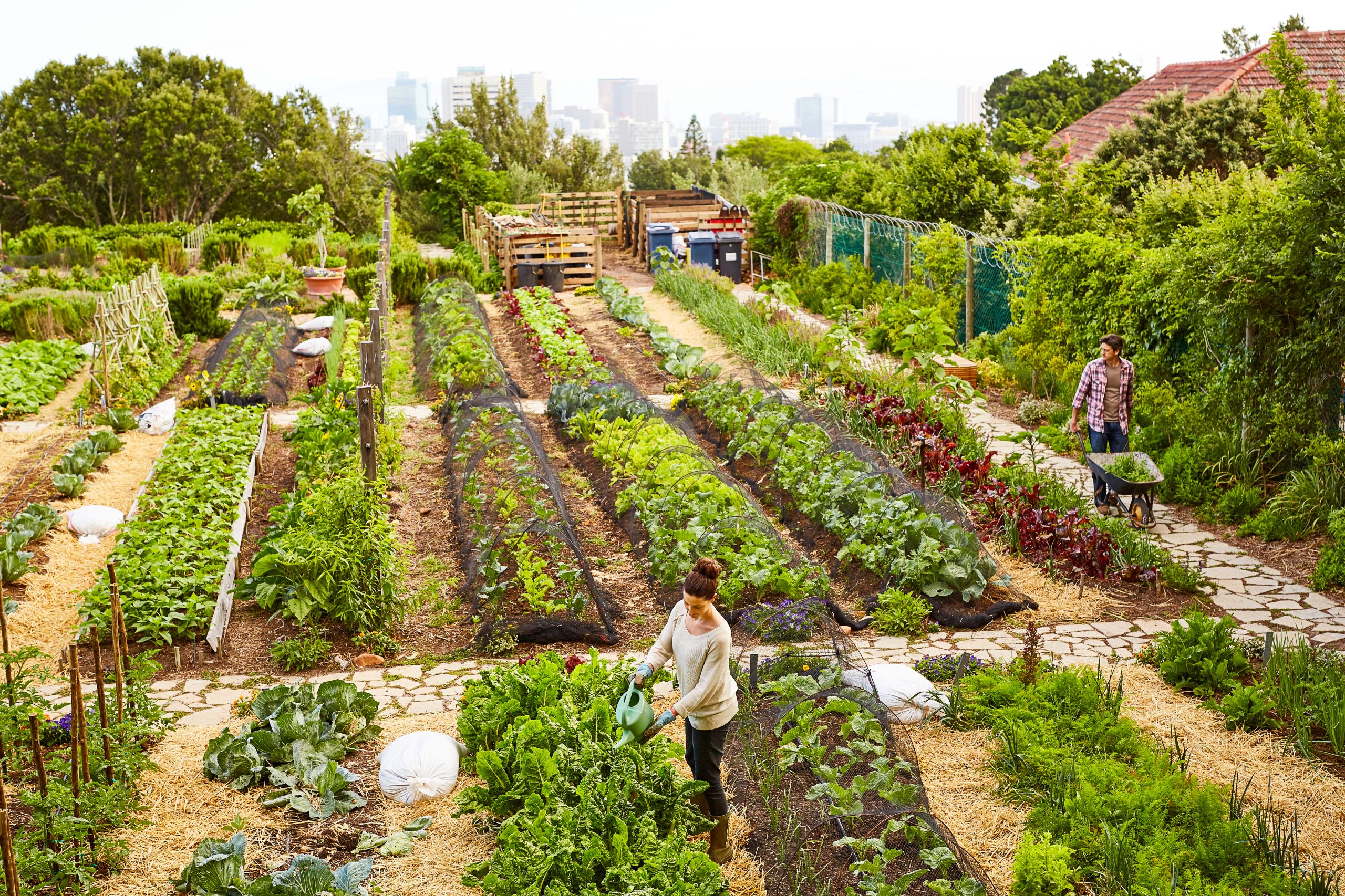
What should transport and mobility responses be now and beyond?
Dr Ransford A. Acheampong
The measures we put in place around transport and mobility are critical to how we emerge from this pandemic and rebuild in the coming years. Dr Ransford A. Acheampong examines how to make transport safe as some of the most vulnerable groups are returning to work, and shows that active travel is essential to reducing pressure on public transport and should become central to our transport and mobility futures.
Low-wage vulnerable workers, who cannot work from home and are at greater risk of catching the virus, tend to depend on public transport for commuting purposes.
Social distancing can be achieved with walking and cycling, making a mass cycling culture critical to our collective health, well-being and resilience now and in the future.
There is a unique opportunity to learn lessons and to invent new futures for towns and cities, including the way we travel.
The COVID-19 pandemic has brought major disruptions to social life, work and the way we travel. There is already evidence pointing to serious ramifications for the global economy. In the UK, after months of lockdown to protect public health, the government is desperate to have the wheels of the economy turning again. The lockdown is gradually being eased since mid-May, and people are being asked to return to work.
It is clear that the measures we put in place around transport and mobility will be critical to how we emerge from this pandemic and rebuild in the coming years. This is particularly important in the face of real concerns that the government’s responses regarding transport and mobility, in the short to medium term, will have serious implications on whether or not there is a second wave of infection of the virus.
In the months of the lockdown, we have witnessed an overall decreasing trend in movement by different modes, including public transport, car-based transport and even walking and cycling. As people return to work, we are also witnessing a gradual increase in traffic on our roads and in the use of public transit in our major towns and cities, such as London. One of the key questions we now face is how to make transport safe for people who are returning to work?
Figure 3. Changes in transport habits across the lockdown period saw rail and tube experience massive drops in footfall
In response to this, the UK government has issued transport and travel guidelines, which essentially advices commuters to avoid public transport, if they can, and instead drive, cycle or walk. What could the likely impact of these transport measures be?
Some of the most vulnerable groups are returning to work
Firstly, we know from the evolving evidence that while COVID-19 poses serious risks to the population as a whole, people from ethnic minority backgrounds are some of the most affected groups in the UK. While factors such as prior health status and underlying health conditions have been attributed, it is possible that the differential levels of risk and vulnerability are partly the result of the occupations that people are engaged in. It appears that people in low-wage work across different sectors of the economy are at greater risk of catching the virus, partly because of the nature of their work. These low-wage vulnerable workers, who cannot work from home, also tend to depend on public transport for commuting purposes.
On the one hand, UK Transport Secretary Grant Shapps has indicated that it is a ‘civic duty’ for people to avoid public transport. On the other hand, we know that public transport is essential for most people to access opportunities, including going to work. Indeed, in 2018/19, some 4.8 billion journeys were made by people using their local buses in Britain, constituting about 58% of all public transport journeys. In London, 27% of workers drive to work, with many of the remaining workers depending on other modes, including public transport. This means that some of the most vulnerable population who are now returning to work, do need public transport to be able to do so. Consequently, there is real risk that people will continue to use public transport in large numbers despite government advice, potentially risking their health and that of the general population.
Making public transport safe and reducing travel-related transmissions
So, how do we ensure that transportation measures being taken actually protect public health?
Increase public transport service frequency. The UK government’s latest safer travel guidelines indicate that there is going to be reduced capacity of public transport services. However, in order to avoid overcrowding on public transport, as we are starting to see on tubes and buses in London and elsewhere, it is crucial that capacity is increased by increasing the frequency of services, especially during peak-hours of travel.
Make public transport faster. Again, the UK government’s safer travel guidelines signals that travel may take longer than normal on some routes. Longer travel time, added to social distancing not being possible as a result of overcrowding, could increase the time that passengers come into contact on public transport, thereby increasing risk of travel-related transmission of the virus. As more people return to work driving, congestion could return, and travel delays on public transport in our major towns and cities could return to the pre-pandemic levels or even worsen. Thus, in the short-to-medium term, it would make sense to reallocate more road space by creating new dedicated bus lanes with the aim to making service more frequent and faster.
Ensure social distancing on public transport and at stations. Basic measures such as reducing occupancy on public transport, marking seats where passengers can sit and controlling passenger flow in stations could go a long way to making public transport use safe and protecting the vulnerable populations who depend on it. Obviously, doing so will amount to reducing capacity, but this can be offset by increasing the frequency and speed of services, such that at regular intervals, more buses, tubes and trams are available for people to board.
Active transport—are more people going to cycle?
The benefits of cycling and walking are obvious, and it does not come as a surprise that the safer travel guidelines encourage more people to do so as they return to work. From the UK government’s position, as reflected in the travel guidelines, walking and cycling are essential to reducing pressure on public transport. Social distancing can be achieved with walking and cycling, with added benefits to the environment and the health of those who do it. The government’s plans for cycling in particular, and some of the actions backing those plans, including the ‘creation of a £2 billion package to create a new era for cycling and walking’, are steps in the right direction and are welcome. However, we need to be careful and even cautiously optimistic about what levels of cycling could actually be realised in the short-to-medium term.
Compared to countries such as The Netherlands and Norway, the UK is a low-cycling country. Nationally, cycling constitutes just about 1% of total trip mileage. In London, where cycling has increased significantly in recent years, less than 3% of all trips were undertaken using the bike pre-COVID19 pandemic. Females and older adults as well as ethnic minorities and low-income groups are under-represented in the number of people who cycle.
A plausible scenario for the UK is that car use will return to pre-pandemic levels or even increase as people avoid public transport. This could make cycling seem unsafe, especially for those that the government is intending to encourage to change their behaviours. If commuters do not drive and cannot cycle, then they have no option but to use public transport. Thus, in the short-to-medium term, as more people return to work, the focus should be on making public transport safer, faster and reliable, by implementing the measures already outlined in this article.
Beyond the pandemic—inventing our transport and mobility futures
In the coming months and years, society and economies will recover from the devastating impacts of COVID-19. There is a unique opportunity to learn lessons and to invent new futures for towns and cities, including the way we travel. Sustained, long-term investment in cycling, walking and public transport should be central in these futures.
As this pandemic has shown, a mass cycling culture, is critical to our collective health, well-being and resilience now and in the future. There is the need for policy to help remove barriers to cycling among under-represented groups, to create inclusive transport futures. In the unfortunate event of another pandemic, we can be sure that the investments we make in cycling and walking, in particular, will yield dividend in aiding our rapid recovery.
Above all, making transport sustainable will be crucial to reversing climate change and averting potential cataclysmic impacts now and in the future.
Originally published 3 June 2020
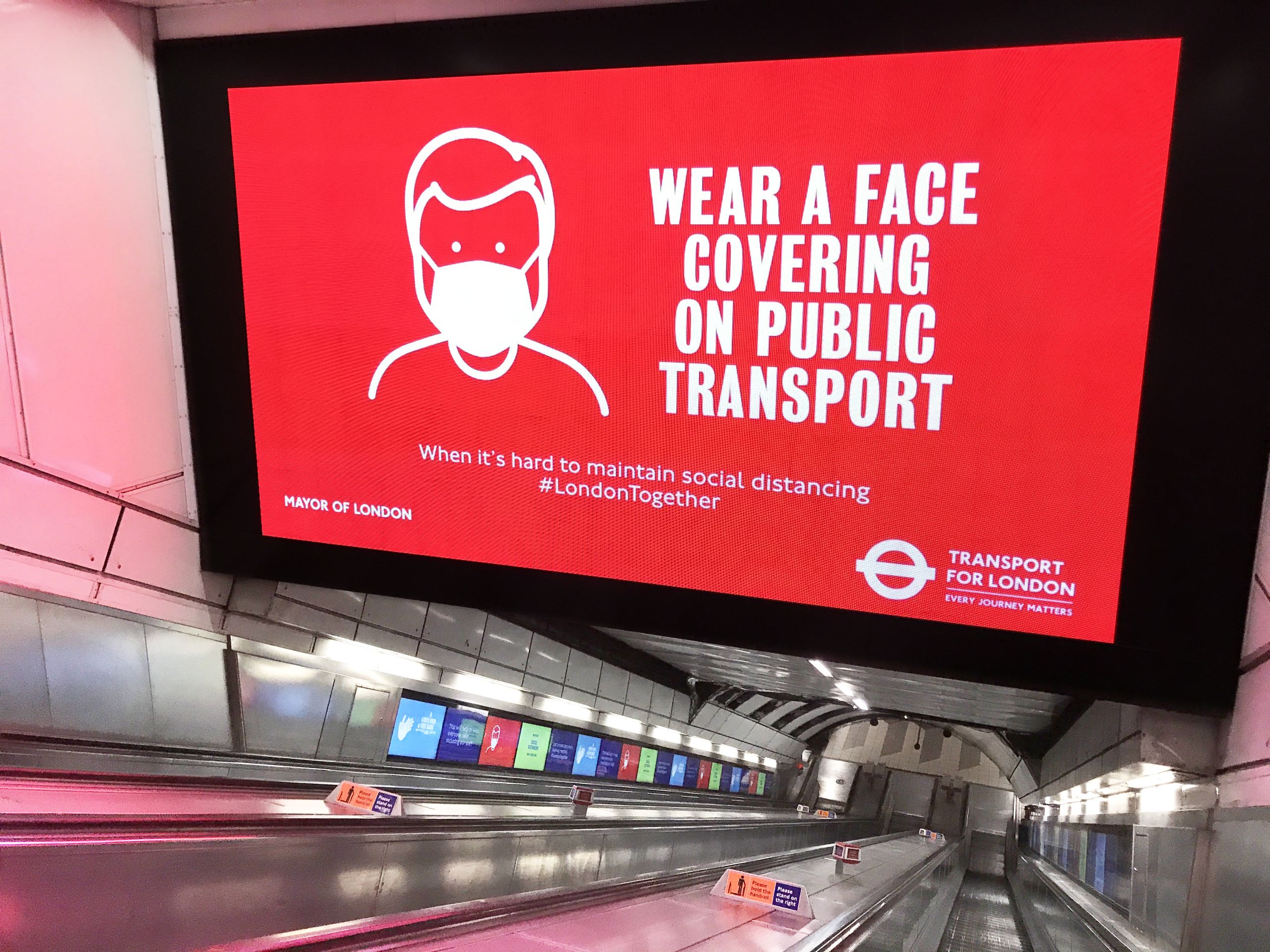
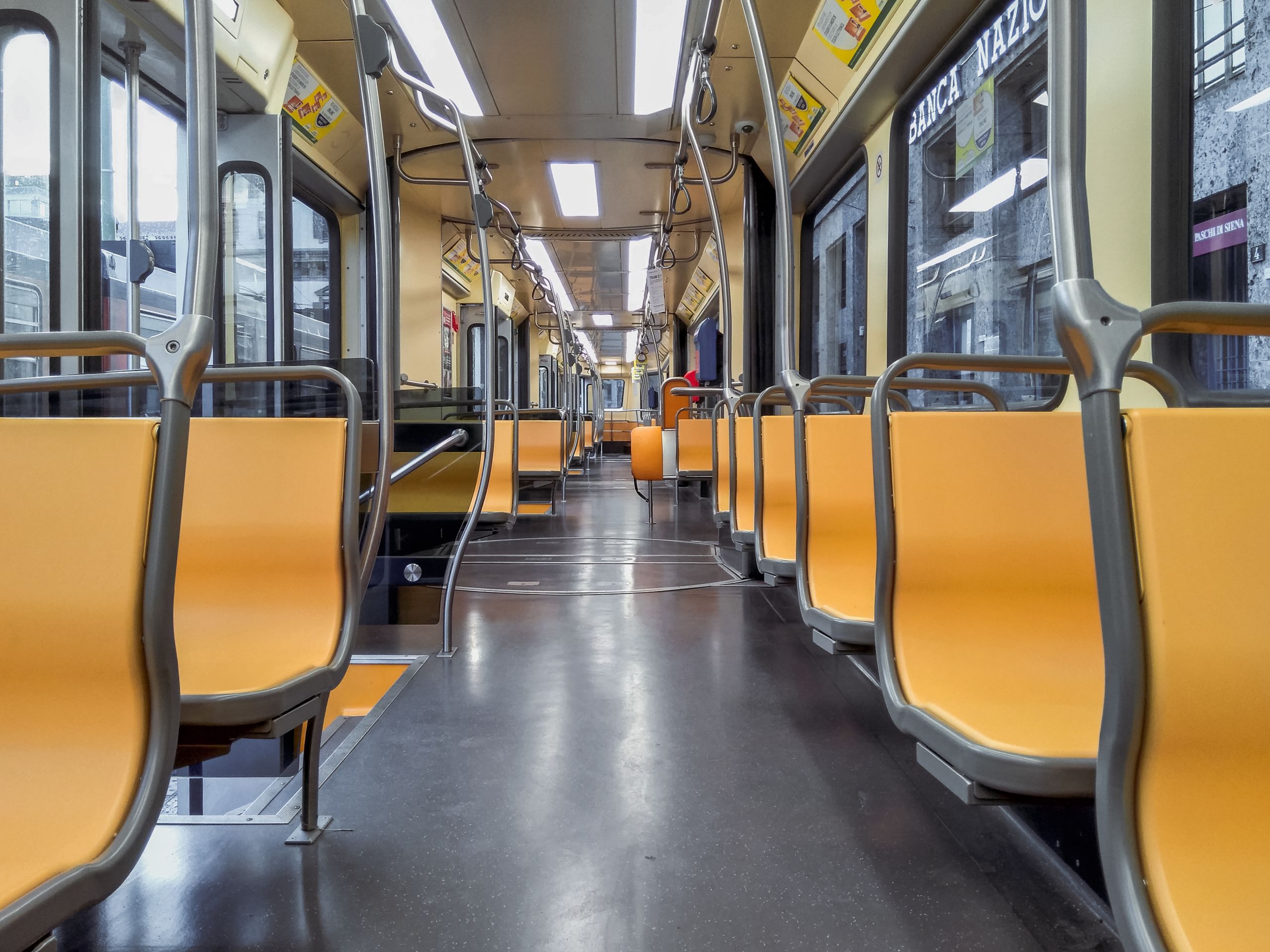
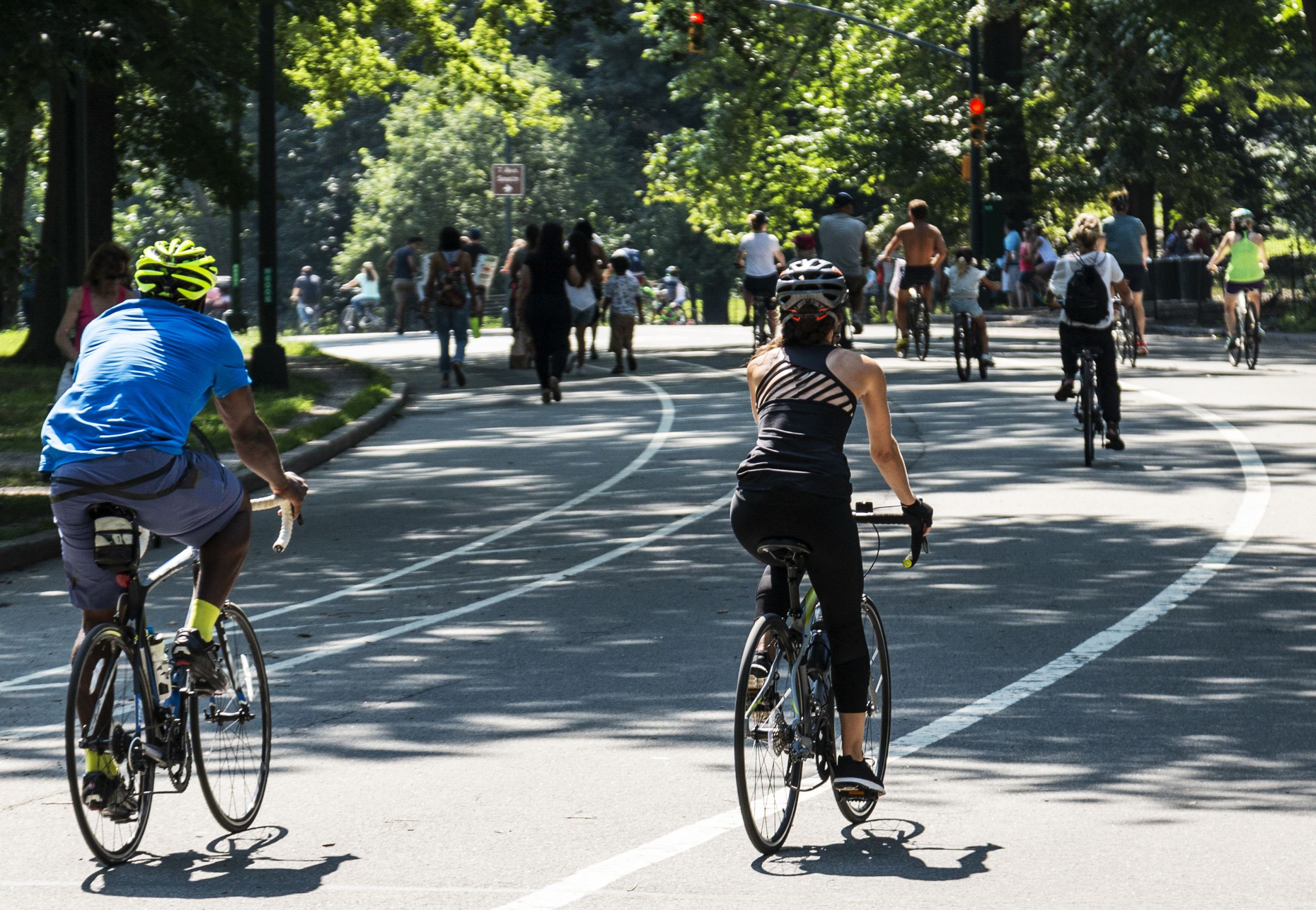
Building back a gender balanced better – devolution, growth and equalities
Professor Francesca Gains
As the initial period of lockdown is slowly relaxed, the policy agenda in all parts of the UK is turning to examine recovery from the economic devastation caused by the pandemic. Policymakers in our major city regions are considering how to start up and stimulate economic activity where safe to do so; help firms and employers transition to new ways of working; and deal with the inevitable growth in unemployment that will flow from recession. Here, Francesca Gains, Professor of Public Policy, discusses the need to consider gender equality when making decisions on how to build back better.
As well as these urgent economic agendas, there is also a desire to learn from the disruption of the pandemic – to think about how to ‘build back better’. To capitalise on the social and environmental benefits that lockdown revealed: strong community and neighbourly support, less traffic and pollution, less time commuting and the potential for more time for parents to share responsibility for childcare.
Fairness and equalities
The lockdown also highlighted the following issues around fairness and equalities, moving these agendas to the top of political and public awareness and debate:
· The higher risks of being affected by the serious symptoms of COVID-19 faced by men and Black and minority ethnic (BAME) communities;
· The concern for (predominantly) women and children living with domestic violence;
· The higher risks of exposure to infection faced by key workers in certain occupations, such as low paid and mainly female care workers;
· The imbalanced unpaid care done within households by fathers and mothers;
· That women are more likely to be in a job that can be done from home with consequent risks to their productivity due to increased childcare and homework duties;
· The greater risks of redundancy following furlough in sectors like retail and hospitality which have a largely female workforce.
This awareness provides a rare opportunity to get equalities policymaking on the agenda. Too often equalities is side-lined unless an economic case can be made. The current circumstances provide this strong economic incentive to build back better especially in devolved areas. Combined authorities headed by a mayor have a vital role in stimulating and coordinating economic growth through their local industrial strategies, skills investment and employment support as well as through enabling integrated public transport. Mayors can be a vital voice for the city regions, working with local authorities, anchor institutions and stakeholders helping to coordinate, target and stimulate growth. But a focus on equalities data on employment will be important in understanding how to target policy to get productivity gains.
Gender and the loss of productivity in the labour market
On Gender, produced for the Greater Manchester Combined Authority Women’s Voices Task Group in 2019, illustrates how the labour market is occupationally segregated, with women being hugely over-represented in low-paid, insecure caring and administrative sectors, leisure, and retail; and men over represented in the manufacturing, construction, engineering, technical and managerial sectors. This picture is replicated in all combined authorities.
Figure 4. The occupational disparities within the female labour market across Combined Authorities are stark.
When the gender differences in labour market participation are examined in Greater Manchester and elsewhere it is clear how women get squeezed out of full-time employment during the years of childrearing and childcare. Analysis shows that the risk of economic inactivity is an intersectional one where BAME women face an even higher likelihood of part-time working or unemployment. A lack of affordable childcare and problems with transport are seen as vital in helping women balance work and care.
The evidence in On Gender shows how the gender differences in employment, occupation and labour market participation are exacerbated during child-bearing years and feed through into gender pay gaps; and greater income insecurity in older age for women with potential consequences for wellbeing and the need for social care.
Having a gendered lens to policymaking is essential to understand how these inequalities build over the lifecycle and how to tackle these issues. For example:
· To address gendered educational choices and build gender targets into skills strategies to support construction and digital skills pathways to encourage girls and to enter occupational sectors where they are underrepresented;
· To work with employers in sectors where future innovation and growth is expected, such as the IT sector, to tackle working practices and expectations which make progression at work difficult to combine with family life;
· To promote the adoption of the voluntary living wage for low-paid workers such as those in the care sector;
· To support the development of vital childcare and transport infrastructure to help skilled female workers manage work and care.
Ensuring building back better involves building back fairer
As the agenda to ‘build back better’ develops, understanding the data on gender and inequalities in the new devolved mayoral authorities will be even more vital on economic grounds to avoid further entrenching occupational segregation. Without deliberate action to ameliorate job losses in sectors where women predominate, realise productivity gains and unlock talent by keeping women in the workforce the impact of the pandemic risks exacerbating gender inequalities.
On social and fairness grounds, Greater Manchester with its health and social care devolution responsibilities will need to work with Government, local authorities and providers to address the problem of social care funding. The vital work provided by low paid and precarious social care workers should be valued. Addressing precarious work is not just important for fairness, but also will support the foundational economy, ensuring the underpinning exchange of goods and services within very local areas.
And the role of combined authorities in supporting (when safe to do so) better public transport, walking and cycling will help achieve some of the environmental potential lockdown revealed. Supporting changing working patterns with less commuting and more working from home can be harnessed to support a balance of work and care in households helping fathers to be more involved in child care.
Now more than ever combined authorities are absolutely critical in tackling some of these pressing, cross-cutting agendas on economic, social and fairness grounds. With the budgets and decisions devolved to combined authorities the equalities agenda is key to helping with recovery.
Originally published 11 June 2020

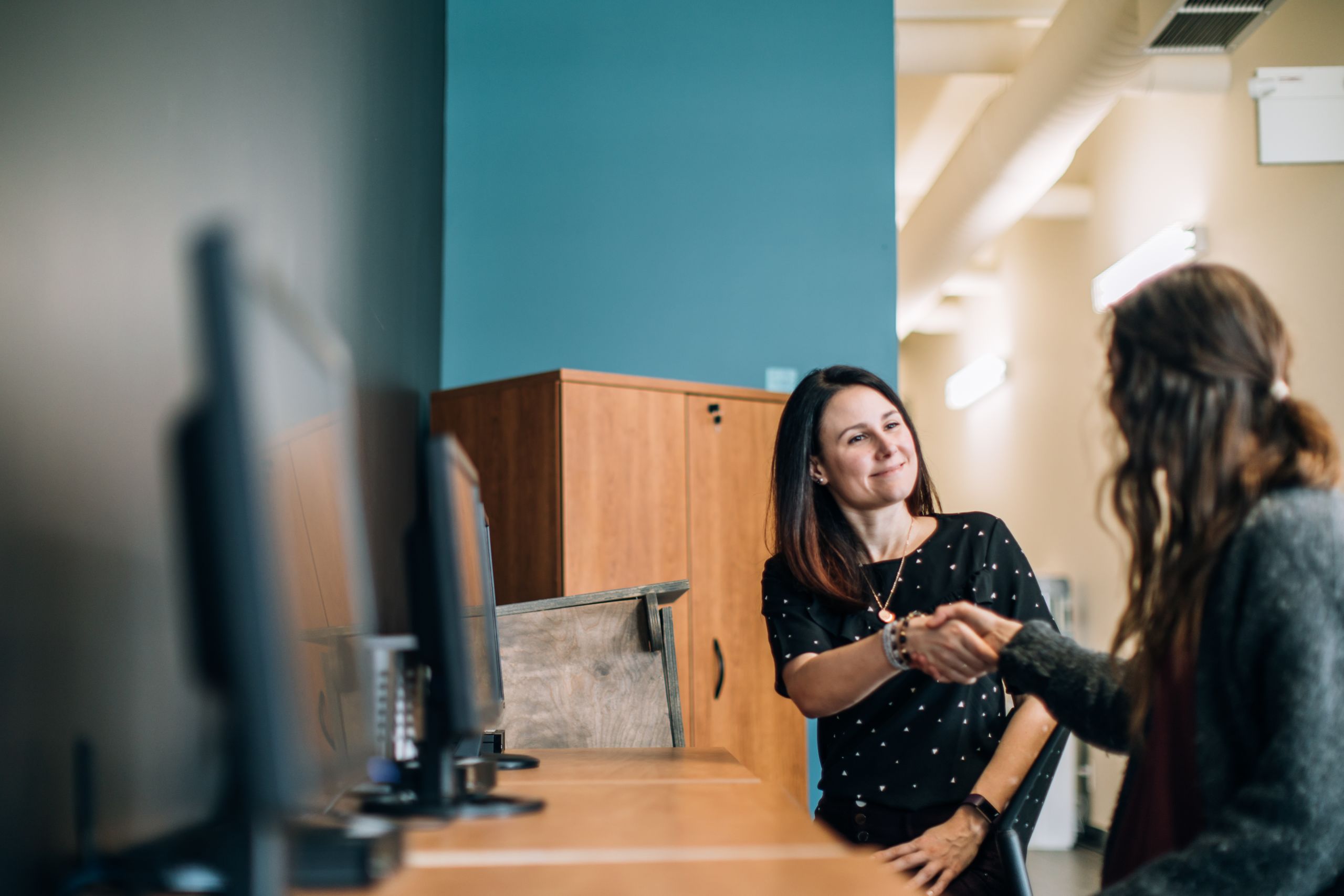

Can shipping emissions be kept in check in a post-COVID future?
Simon Bullock
The shipping sector is playing a vital role in the COVID-19 pandemic, keeping Britain supplied with everything from pasta to PPE. But what role does it need to play in another great crisis – preventing catastrophic climate change? Here, Simon Bullock from the Tyndall Centre, Manchester, looks at what needs to be done in order to keep shipping emissions below the 1.5 degrees Paris Climate Agreement.
Ships typically emit less carbon dioxide (CO2) per tonne of freight than lorries or planes. But the global impact of shipping is still huge: if it were a country, it would be the 6th highest emitter in the world. So what needs to be done?
New research from the Tyndall Centre explores this issue for shipping through the concept of “committed emissions”. Committed emissions are those emissions we can expect to see in years to come from existing infrastructure – in this case, existing ships that will continue to emit CO2 across their 30-year lifetime.
Our research considers ships travelling to and from the EU in 2018 – how much CO2 they are emitting, and how long they are likely to stay in service. The committed emissions just from these existing ships exceeds the amount of CO2 EU shipping is allowed to emit overall if it is to make a fair contribution to the Paris Climate Agreement’s goal to keep global warming below 1.5 degrees. Because ships have average lifetimes pushing three decades, it is existing ships, not new ships, that will be responsible for most of shipping’s future CO2 emissions. This is in contrast to the road transport sector, where there are shorter product lifetimes, and a much faster turn-over of the vehicle fleet.
But, there is hope. There are many ways in which emissions from existing ships can be cut: slower speeds, fitting modern sails, using green electricity when in port, retrofitting vessels to be more energy efficient, greater use of hybrid vessels using batteries, and retrofitting vessels to use zero-carbon fuels such as ammonia and hydrogen.
Our research shows that if new vessels are able to run on zero-carbon fuels from 2030, then a strong suite of policies targeting existing vessels – on speed, operational efficiencies, blended fuels and zero-carbon fuel retrofits – could keep shipping’s emissions within the Paris Agreement’s 1.5 degree carbon budget. But only if this action to retrofit the fleet happens quickly.
What needs to happen next?
First, the International Maritime Organisations (IMO) current target of at least 50% cuts in greenhouse gas emissions by 2050 needs to be significantly tightened to be compatible with the Paris 1.5 degrees goal. Our research indicates that keeping within 1.5 carbon budgets would need shipping CO2 emissions to fall to net-zero by 2040.
Second, the IMO’s policy focus is predominantly on measures for new ships, such as the Energy Efficiency Design Index (EEDI) energy efficiency policy, which sets emission levels per tonne km for new ships. While this and at-scale deployment of zero-emission fuels and ships by 2030 are both essential, it is critical that the IMO focusses on measures that cut emissions from existing ships as well, as existing ships will produce the bulk of future emissions. “Slow steaming” is one of the best short-term measures to cut energy use and emissions; ship operators still widely practice this since the financial crash, to cut fuel costs. This has cut the CO2 intensity of ships by 30% since 2008. Further savings are possible still but require some form of international policy mechanism. One problem is that progress at the IMO is mired in complex wrangles over policy design, with reluctance to make any measure mandatory. Breaking the international impasse on progress on slower-speeds is a priority.
Third, the research shows wide variety in the lifetimes and committed emissions profiles of different classes of ships, implying that targeted policies are needed. Refrigerated cargo ships have an average of 9 years likely future life, whereas for passenger ships it is 29 years. For ships and ship types with shorter remaining life, it’s hard for ship-owners to make a strong economic case for actions on their own, so the successful uptake of emission reduction measures requires action from policy makers, such as regulating on speed, setting standards on retro-fitting to improve efficiency, or market-based mechanisms that impact on fuel price.
Efficiency improvements on new ships won’t be enough
The committed emissions from ships are significant, yet a combination of policies on very low-carbon ships from 2030, combined with speed and operational measures from the early 2020s, could keep shipping within a Paris-compatible carbon budget. However, any delay to appropriate policy implementation would mean additional measures, including demand-side or early scrappage interventions, are needed to meet the Paris climate goals.
The time left to deliver on what is dictated by the global Paris Agreement is too short to rely on measures that predominantly focus on improving the efficiency of new ships. Policy makers should include a focus on measures that clearly target the existing fleet.
Originally published 15 June 2020

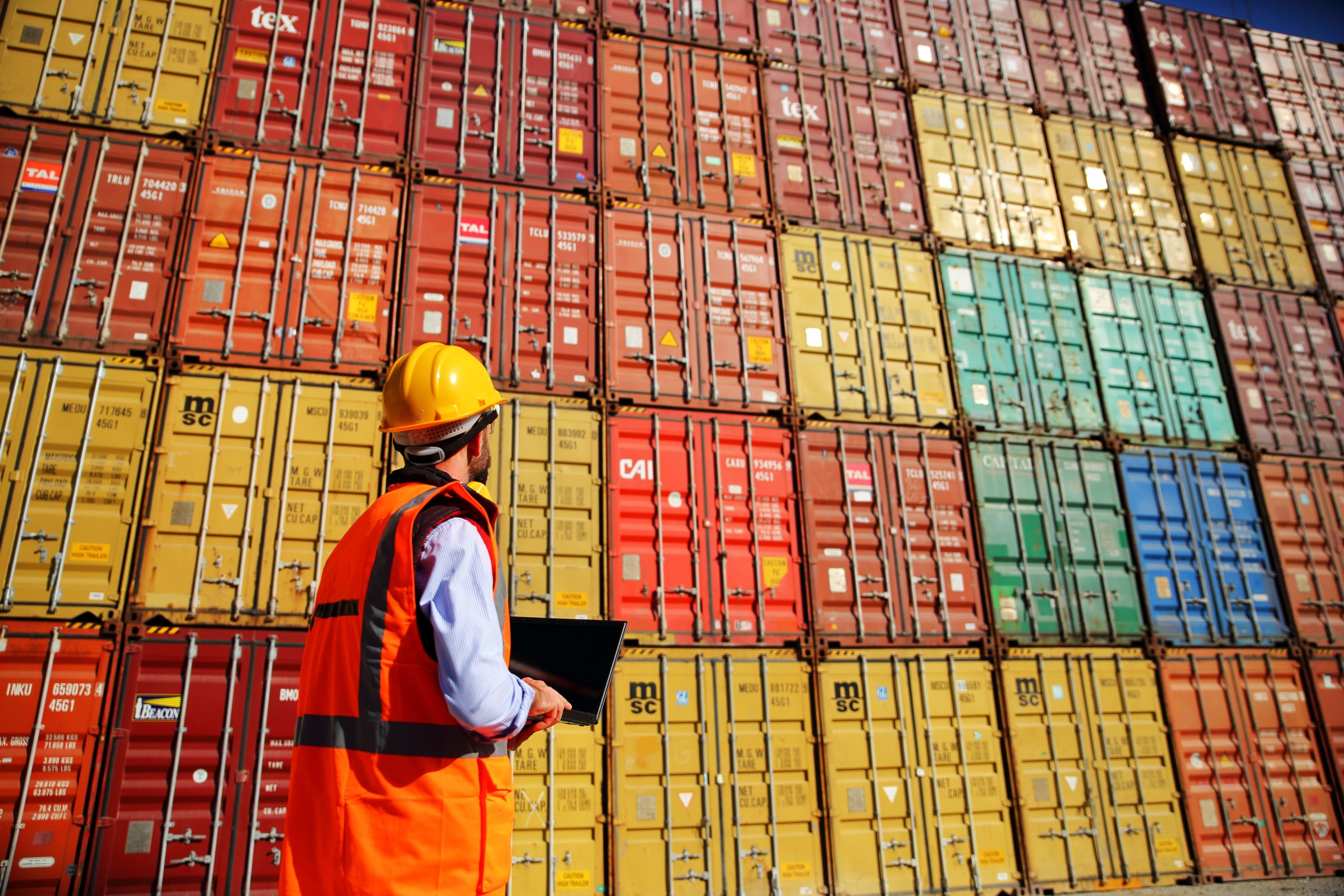

Recognising the value and significance of cleaning work in a context of crisis
Professor Miguel Martinez Lucio and Dr Jo McBride
Professor Miguel Martínez Lucio of the Work and Equalities Institute and the Alliance Manchester Business School and Dr Jo McBride of Durham University discuss the question of how we have failed to value the work and importance of those in the area of cleaning and hygiene-related employment more generally. The need now is to consider how such workers are engaged with and supported through a greater framework, with respect and dignity being paramount. This is essential if we are to overcome the challenges of ongoing crises such as that of the current pandemic.
Even before the introduction of social distancing at workplaces, many cleaning workers found they were working more in isolation (due to job cuts and less supervision). We interviewed cleaners working across four different public sector organisations to learn about their experiences in the workplace. Alongside working more in isolation, many cleaners are being left to decide what they feel is a work priority, indicating that they are taking on more of a decision-making role in the workplace. This sense of increasing discretion could be perceived, albeit superficially, as a further complexity of the work. This undermines the use of the term ‘unskilled’. Others began to draw out a growing sense of awareness of the negative context of the environment and the way it impacts on their work and decision-making.
The context of safety and violence in many aspects of cleaning
Due to the growing isolation of their work, many of the cleaners we interviewed felt they were also at greater risk in terms of danger, fear, and violent threats. Cleaners who worked alone explained how they had experienced more direct forms of threats, particularly when working in public spaces. Levels of physical abuse were significant. Many of these workers perceived recent cuts to their operations as a contributory reason for an increase in negativity by the public and were having to respond to this in various ways. One domestic refuse collector told us: “Oh, you get abuse all the time, like. I’ve had stuff thrown at me, bags and everything. They come out and swear and shout at you.”
Austerity and cutbacks
Street cleaners especially have needed greater discretion in their job, not only in threatening or violent situations, but also when facing hazards to their health in the work they undertake, such as when handling discarded, dirty needles on the streets. Cleaners have to also help each other develop their knowledge of challenging areas of work and how to respond without the necessary materials. Their roles are expanding to the point where they include managerial dimensions in terms of decision-making and using greater levels of discretion in terms of thinking through the consequences of actions. It is increasingly clear for the street cleaner to be given more responsibility of supervising another worker yet for this not to be valued remuneratively or by management. These are administrative features of their work which do not actually get recognised.
Stigma and the feeling of being valued
One of the challenges facing cleaners in recent years is the stigma attached to the job, as they are seen as unskilled and low paid. These concepts reinforce a sense of worthlessness – and that the job being done is ‘unimportant’.
In terms of stigma, and its related factors of dirty work, unpleasant work and risk, internal cleaners in our study thus received negative social perceptions of their work but also of the whole purpose of it. It is not just that the person doing the job is undervalued, but that the purpose of the job and its significance is simply not fully understood. This has a massive impact in terms of the way the economy is misunderstood and the way certain core activities that are important to sustain it are undermined. In stigmatising cleaners, the whole question of hygiene and health is undermined and thus is underinvested.
This lack of appreciation and even of the recognition of new challenges of these jobs also extended to other workers in the study. These were in relation to external cleaners, some of whom demonstrated that, despite verbal abuse and a lack of respect from some members of the public, they still had a sense of feeling dignified despite others’ negative perception of their work. Stigmatising workers and seeing it as peripheral work means that the core purpose and value of that sector is undermined. This has been happening for some time and has had a major knock-on effect on the way recruitment, development and quality within the economy is undermined within its very foundations.
Yet the COVID-19 pandemic has introduced a ‘Clap for Carers’ campaign of public appreciation for workers, involving some in our study. This demonstrates a mutual social perception of the value of much of this work and there is already a re-evaluation of such work in the public discourse.
Rethinking the way we envisage work and employment
First, the value of work has to be economically and symbolically supported in a more effective manner. The way we see the economy in skewed terms and the way we envisage support workers such as cleaners has curious knock-on effects. When there is a moment of crisis and work such as cleaning is deemed suddenly to be essential, we find that these subsectors are literally unable to respond to the challenge at hand due to their demoralised state or limited support in material terms.
Second, the need to recruit, retrain, upskill and retain such workers must be pushed into the centre of the political discussion. The lack of resourcing and the aggressive, and dysfunctional, management cultures that cleaners face prevents workers from pursuing a balanced and more effective approach to their work. This has led to immense fragmentation brought on by ongoing subcontracting and performance management which is not concerned with long-term development.
Third, the very way we think of ‘unskilled’ work needs to be challenged. Even key employer organisations within the cleaning sector have argued for decades that there is a need to not just value but professionalise the work and to remove the stigma of it being unskilled. The importance of health and hygiene is an important feature of the welfare interventions of the state. The need to recast our personal and political mindsets to include the voice and concerns of bodies of workers such as cleaning workers will be a challenge for future policymakers. It is also a cultural challenge in a society where the construction and maintenance of our infrastructure has played a secondary role compared to its commercialisation.
Millions of these frontline staff, now viewed as key workers, have been keeping the country running while facing risks to their own and their families’ health. The fact that they are ‘keeping the country running’ again undermines the persistent use of the term ‘unskilled’ with regards to this work. Indeed, this work is currently being recognised and valued across our communities in a way that has not been the case for some time. We therefore need to ensure that this continues to be recognised as valuable and meaningful work.
Originally published 10 June 2020

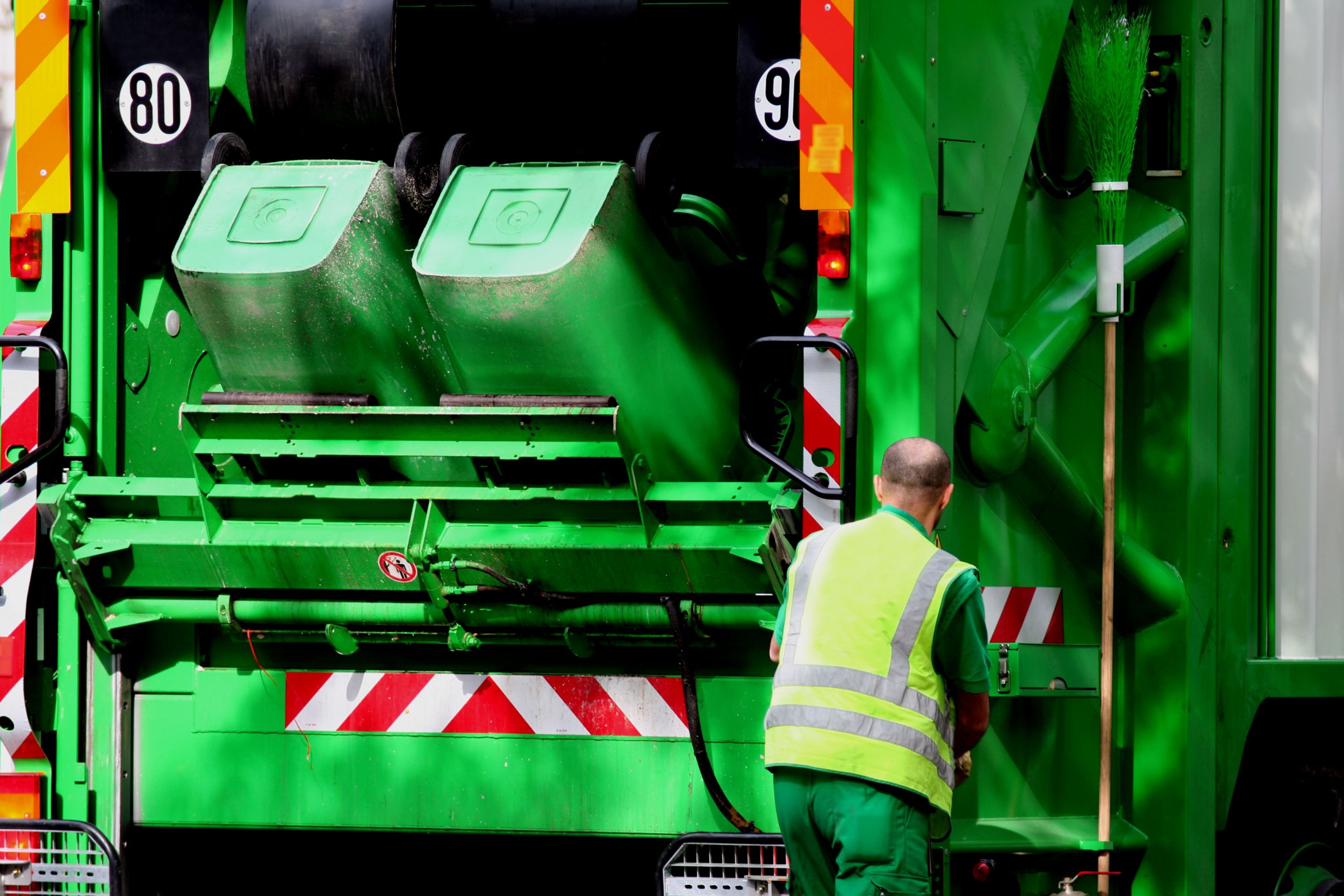

A tale of cities: Local diasporas hold a key to strengthening international outreach
Professor Yaron Matras
The publication of Government guidance on social distancing saw a delay between the release of the English language version and the guidance being provided in different languages. Professor Yaron Matras examines this disparity and suggests a new policy to prevent a similar issue arising in the future.
Amidst the intensity of instructing the public on how to prevent the spread of COVID-19, authorities in the UK have been slow in issuing guidance notes in languages other than English. The matter was raised by Labour MP Afzal Khan, whose Manchester-Gorton constituency is one of the country’s most linguistically diverse. Speaking in the House of Commons on 11 March 2020, he called on the Government to disseminate information in community languages. On 13 March, Doctors of the World UK published translations of NHS information leaflets into 44 languages; at a similar time, the Manchester charity Europia produced video advice in various European languages.
However, it wasn’t until late March that Public Health England added guidance on social distancing for vulnerable people in a number of languages. Meanwhile, Cambridgeshire and Peterborough Councils published video information in 31 different languages, while Liverpool, Manchester and Birmingham were among several local authorities to provide web links to the Doctors of the World translations.
The official UK Government COVID-19 information leaflet was finally published in a small number of languages on 7 April.
A more consistent approach
Authorities in the UK usually translate in order to ensure accessibility of services, or else as a way of regulating behaviour. They target those that are expected to be most liable to violate the rules: leaflets on forced marriage are disseminated in Arabic, Somali and Urdu, for example, while information on angling restrictions appears in Lithuanian, Latvian and Polish. But with COVID-19, the prospect that residents with a low level of English might become carriers of the disease poses a potential risk not just to them but to the entire population. If the UK Government had a domestic language policy in place, the translation of vital information could have been more efficient and consistent. In the absence of such macro-level policy, gaps are currently being filled in a somewhat random way by charities and local authorities.
Discourses around language policy
Over the past few years, especially since the EU referendum in 2016, the public discourse around language policy, to which many researchers have been key contributors, has seen two main strands of argumentation. The first is concerned with counteracting the decline in enrolment in traditional Modern Language courses (like French and German) at secondary schools and higher education. It calls on the government to recognise language skills as a valuable asset to protect British interests abroad, like security and trade. It sees national government agencies as the primary deliverers of this agenda. Some scholars frame it as linked to the mission statement of New Area Studies, seen as the intellectual arm of foreign intelligence gathering and ‘soft power’. Others have tried to capitalise directly on Brexit, cynically arguing that the imminent ‘departure’ of residents who are EU citizens will open up gaps in industries, to be filled by ‘homegrown’ workforce with language skills.
An alternative strand is concerned with language policy as a social justice agenda to promote equality in the domestic arena. It points to the rising uptake of language courses, particularly Arabic and Chinese, as heritage languages in non-statutory education such as supplementary schools, and recognises the importance of cities and local government, and of the intellectual concept of Locality to support heritage language speakers in creating local brands of ‘global diasporas’. In May 2019, Multilingual Manchester sponsored an open event, calling for the formation of a Multilingual Cities Movement that would bring together stakeholders from different sectors, uniting around the realisation that while many nation-states now promote linguistic sameness in an exclusionary way, cities are usually places where languages meet and linguistic plurality and difference are appreciated and celebrated.
Cities have the potential to forge international links. Diaspora communities within cities can play a pivotal role in that process. Global diasporas of today are not temporary emigrants waiting to return to their homelands, but active contributors to global networks of culture and trade. While maintaining links with co-ethnics abroad, they are also engaged in local practices of plurality. If they are allowed to thrive and cultivate their heritage languages, then the localities in which they are settled will be in a better position to be players on the world stage.
A domestic language policy
A coordinated and consistent domestic language policy must firstly acknowledge the UK as a multilingual society. It should take steps to dismantle the hierarchy that currently guides language teaching and which favours the languages of historical imperial European powers. It should recognise the value of heritage languages as skills and encourage the teaching of heritage languages in statutory and higher education, but also support community-based language learning that takes place in the country’s hundreds of supplementary schools. That will also offer a pathway to empower the second and third generations of immigrant background to act as transnational diaspora communities that can build bridges with counterparts in other countries – links that can strengthen diplomacy, investment, and cultural enrichment.
In addition to supporting heritage and skills, a domestic language policy should take steps to regulate the sector of Public Service Interpreting and Translation to ensure high-quality access to services to those with insufficient English language skills.
It also requires modification of key tools to gather accurate data on language use and language skills. For example, currently, the Census asks respondents to indicate their ‘main language’ other than English, but the concept of ‘main’ is vague, and respondents can only choose one single option. Instead, we should be asking about languages that are used in the home, as well as additional language skills. An effort needs to be made to change the public narrative on languages. Last year Boris Johnson, then still candidate for the Tory leadership, demanded that all UK residents should adopt English as their “first language”. We need to move away from such notions of one-sided ‘integration’. Instead, policy should encourage people to maintain language skills and cultural identity, and recognise that multiple identities and multiple languages are an asset for individuals and the country as a whole.
Cities can be active contributors to a new vision of a domestic language policy. A model example is Manchester’s commitment to a City Language Strategy that brings together the contributions of a variety of organisations in the public and community sectors. Strengthening diaspora communities can help them forge city-to-city links worldwide. Policy must ensure that community language needs are met consistently and not left to improvisation in times of crisis.
Originally published 5 May 2020



Build in haste, repent at leisure? Post-pandemic planning at the precipice
Professor Iain White, Professor Graham Haughton and Dr Nuno Pinto
The COVID-19 pandemic has led to discussions on what shape planning should take post-crisis. Here, Prof Iain White, Prof Graham Haughton, and Dr Nuno Pinto outline how current regulations have exacerbated difficulties for some people in lockdown, discuss how opportunistic developers or politicians may seek to hijack the policy responses, and suggest solutions to ensure the post-pandemic recovery is beneficial for all.
A wide-ranging discussion on the implications of the COVID-19 pandemic by city mayors, academics, and others, has evoked new ideas on how we live and move, and on how to transition economies to be greener and cleaner. Despite such good intentions, as the dust settles, we run the risk of returning to ‘business as usual’ and we are already seeing much new thinking side-lined, alongside a reversion to familiar narratives of ‘speed’ or ‘red-tape’. We must be cautious about altering the planning system so it can do the wrong thing more efficiently.
The cost of fast-tracking infrastructure
Under pressure for quick results, there are signs that some governments seek to short-circuit the planning system in order to expedite development. For instance, the mooted ‘shovel-ready’ infrastructure stimulus in New Zealand aims to create a fast-track process, where politicians select projects and there is no opportunity for citizen involvement. Significantly, the Minister in charge said that there should be a high level of certainty that consent is given. Meanwhile, Australia’s version of ‘fast-tracking infrastructure’ sees a call not just to cut ‘red-tape’ but ‘green-tape’ too—that is, environmental regulations. In the UK, the Transport Secretary recently used the term ‘bureaucratic bindweed’ to describe rules in the current system that presumably need to be eliminated.
During the current pandemic, English local authorities were initially forced to abandon their planning committees, instead giving greater powers to officials, sometimes aided by senior local politicians, to decide on major, occasionally contentious, projects. Requirements to publicise site notices have been relaxed in England, while the Housing Secretary has announced that instead of traditional methods, local councils and developers can use social media to publicise applications to ‘unblock’ planning. This is bad news for those without social media or access to technology or data, discriminating particularly against the elderly and the most vulnerable. While some local authorities in England have now adopted virtual planning committees, many have been slow to introduce them.
Under these relaxed measures, opportunistic developers may have been emboldened by relaxed planning requirements to bring forward proposals that are likely to be locally contested, hoping this might improve their chances of slipping projects through.
We structure our discussion about improving the processes of planning under three headings: better planning before, during, and after future pandemics.
Better planning anticipating pandemics
Having now experienced social distancing and lockdown, and with the prospect of a pandemic a recurring possibility, planners need to prioritise actions that better prepare for the implications. It is clear we need better provision of both private and public space. Homes need to be built to higher standards. Under current English regulations – as a recent case in Watford revealed – it is possible to build homes without windows, a decision upheld by the planning inspectorate, against the objections of local planners and politicians. Imagine an elderly or vulnerable resident being locked-down inside such a development.
Fortunately, the considerable public outcry, media attention and political opposition appears to have seen the developer reconsider the scheme. This only goes to show the importance of proper local scrutiny of development proposals. The problem here is that the English planning system no longer does this in all cases, and fast-tracking may give more power to developers. Rather than give away more permitted development rights, we should be looking to limit them, restoring local democratic scrutiny and the rights of local residents and citizens.
Better planning during pandemics
Local authorities need clear plans in place for how planning decisions will be made in any future lockdown or enforced social distancing. Major projects must not be waved through under emergency rules, and predatory developers wishing to exploit any perceived relaxation in planning approvals need to be discouraged, perhaps by removing their right to appeal any planning decisions taken under lockdown and instead giving the public the right to appeal.
In terms of planning to exit a future pandemic-related recession, rather than relying on large scale mega-projects ushered through without adequate political scrutiny and public consultation, there is much to be said for encouraging smaller projects that emerge out of local consultation and that are open to robust challenge under effective local planning systems.
Local projects might be slightly slower to be approved, but much quicker to build than, for instance large-scale road projects. They also tend to be better fitted to the nature of places that they occur in and jobs more likely to be local.
Better planning processes, fit for rebuilding the post-pandemic world
Considering how the public expectations of transparency and fairness have been raised during the pandemic, we should also expect citizens to question the politicians who use expert advice to deflect, blame or limit meaningful opportunities for public engagement.
Over the past decade, in England and elsewhere, planning systems have been loaded in favour of developers and their advisors and against local communities. Backing up this state of affairs has been growing recourse to poorly specified technical processes which serve to bamboozle and outmanoeuvre the public.
The planning system needs to be reset, so that the language and techniques of planners, developers, and consultants are intelligible, transparent and favour honest communication between politicians, stakeholders and the public. The fear is that in the rush to rebuild, the bigger projects that are being politically favoured, tend to be complex and technical, and if they are rushed through, there will be even less space for better processes.
Conclusion
Rather than build in haste and repent at leisure, we need to think deeply about how the planning system can be repurposed to suit the emerging challenges for cities, not least in relation to the once-in-a-generation investment and the revised expectations from the public around transparency and fairness. Planning, like policing, is at its best when it works on the basis of consent–attempts to reduce opportunities for scrutiny, challenge and dissent threaten the legitimacy not just of planning, but the whole development process.
Originally published 27 May 2020



How inequalities are affecting the response to COVID-19
Nasima Begum, Professor Arpana Verma and Dr Bella Starling
In a recent clip widely shared on social media, Newsnight’s Emily Maitlis highlighted the inequalities at the heart of the current COVID-19 emergency, describing it as “a public health issue with huge ramifications for social welfare and a social welfare issue with huge ramifications for public health”. Dr Bella Starling, Professor Arpana Verma and Nasima Begum outline how COVID-19 can disproportionately affect those who are already impacted by social, ethnic and gender inequalities.
Prevalence and risk
Emerging data show that nearly 35% of people who are critically ill with coronavirus are from Black and Asian backgrounds. This is higher than the 13% of the UK population who identify as from Black, Asian and ethnic communities in the last Census. While some factors might explain this higher proportion – for example, COVID-19 has primarily affected urban areas, including local authority wards with large, ethnically diverse populations – based on this current data, Black people are significantly more likely to be critically ill with COVID-19 when taking account of local demography.
Those with ‘underlying health conditions’ have been shown to be at risk of more severe cases of COVID-19. BBC News have reported that nine out of ten COVID-19 deaths recorded by the ONS so far have featured underlying health conditions. In this context, it is imperative to recall that ‘underlying health conditions’ are often associated with those that are already marginalised or living with protected characteristics. For example, diabetes is associated with higher risk of COVID-19. At the same time, people of South Asian origin are up to six times more likely to develop Type 2 diabetes than the general population in the UK. Such correlations may account for some of the greater numbers of hospitalisations being seen in ethnic communities, though further evidence and analyses are required.
There is also increasing evidence of a gendered aspect to COVID-19 risk. Men are more severely affected than women, according to mortality data. In this case, it is important that this disparity, occurring as it does along the lines of a protected characteristic, are taken into account when creating policy responses and the development of clinical practice.
Access to care and treatment
Evidence shows that in some conditions people present differently for care. LGBT communities, for example, are less likely to access healthcare. In cancer, Black, Asian and ethnic communities present later, at a more advanced stage of disease. Awareness and help seeking behaviour is low across all ethnic groups, with the lowest awareness in the Black African group. Access to screening, and the location of COVID-19 screening facilities, is therefore vital and needs to be inclusive of areas where different communities are located.
Great strides have been made in supporting the move to remote healthcare consultations and online interactions during the coronavirus outbreak. However, access to technology is unequal. Those in manual occupations and the unemployed have lower rates of smartphone use: 67% in lower (eg. DE) socioeconomic groups and 86% in higher (eg. AB) socioeconomic groups (in 2018). In addition, little is known about attitudes and acceptance of telehealth methods amongst diverse groups. Take diabetes again, for instance; low participation rates of ethnic diabetes patients have been reported in systematic reviews focusing on telehealth interventions, and the ethnic composition of studies is often unreported.
Workforce(s)
Those in public services and the service industry, who work with large numbers of the general public, are at greater risk of exposure to COVID-19. Their numbers include high rates of Black, Asian, and working class members. According to a recent report, BME individuals account for 21% of all NHS staff; 20% of nursing and support staff and 44% of medical staff. Tragically, as of 22nd April, they also account for 63%, 64% and % of deaths in the same staff groups. In addition, 50% of health and social care workers who have died were born outside the UK, compared to a reported 18% of NHS staff.
The same report highlights that women are in higher numbers in this dataset (contrasting with the dominance of men infected or admitted to intensive care). Taken together, these data might suggest that the burden of, and risks associated with formal care during the outbreak (and perhaps also the burdens of informal care: community volunteering, homeworking and home-schooling) fall more to women, ethnic and migrant groups, reinforcing societal inequalities.
Society and communication
In the early stages of the outbreak, an Ipsos MORI poll showed that casual racism was becoming apparent: 14% of those surveyed would avoid people of Chinese appearance. Should any prejudice arise against those who have had COVID-19 (once testing is more firmly underway), how can we guard against such prejudice being experienced by people with protected characteristics, if COVID-19 incidence remains higher among these groups?
People with limited financial and social resources are more likely to have limited health literacy, and we know that people from different backgrounds and protected characteristics seek health information through a variety of different and culturally specific media. The majority of mainstream health reporting is dominated by White voices, which may be a ‘turn-off’ for some communities seeking information about coronavirus, and social media can often provide incorrect information.
More widely, outside of the regulated systems of NHS patient and professional interactions, the wider move to increased online communication during this pandemic needs to be conscious of accessibility and language, as well as historical and recent targeting of people with protected characteristics online.
Finally, the language around COVID-19 and ‘underlying health conditions’ can be damaging. Language, and all its nuances, has power that goes beyond the speaker. It can guide our thinking and behaviour, providing a backdrop to what might be considered ‘normal’ or acceptable. So, when, probably through no ill-intention, narratives emphasise the serious risk of dying from COVID-19 ‘mainly’ amongst those with ‘underlying health conditions’, these can lead to the consideration that there are members of society who are considered to be more disposable than others. A recent editorial commented how labelling causes stigmatisation and public health should focus on reducing the stigma associated with COVID-19 to “inform immediate and long-term strategies to build empathy and social justice in current and future pandemics”.
Keeping inequalities central to the COVID-19 response
So, in Emily’s words, how do we stop inequalities becoming even starker because of coronavirus? Nationally, research is massively mobilising, including in Greater Manchester.
It is clear that COVID-19 is exacerbated by social inequalities, with marginalised groups often at most risk of contacting the illness and their illness more likely to be severe. Research, policy and practice needs to quickly adapt to this fact, and put social, gender, racial and access inequalities front-and-centre in our response.
With that in mind, we propose the following steps to help in this effort to ensure that we leave no-one behind;
Better understanding of the patient experience of COVID-19 in those with protected characteristics, and investigations into the biological, medical, or sociological factors. NIHR and UKRI have responded to the emerging data with a funding call to explore the association between ethnicity, COVID-19 incidence, and adverse health outcomes. This is to be applauded, demonstrating agility and flexibility in signalling the importance of this research as quickly as possible. Interdisciplinary research could further strengthen the evidence base.
Coronavirus research (including research priorities, planning, design and implementation) must be inclusive of people and patients including those with protected characteristics. NIHR has demonstrated leadership through its commitment to working in partnership in research with patients, communities and the public (public involvement, engagement and participation) during the pandemic in line with the UK Public Involvement Standards.
COVID-19 related research needs to capture as much data as possible so as to be able to carry out subset analyses. There is an important role for ethics committees in ensuring that this can be carried out.
Engagement with COVID-19 and related research, whilst supporting vital public health messages, needs to be imaginative, creative and inclusive in its reach, with appropriate translations as a minimum. Learning from how science communicates and listens to less well heard communities might be helpful here, as is keeping online safeguarding high on the agenda.
Learning from existing good practice that places health inequalities at the heart of translational research. For example,
· The Health Inequalities Steering Group supports the Manchester Biomedical Research Centre and Clinical Research Facilities to be conscious of, and address, health inequalities through its research
· Applying the Health Inequalities Assessment Toolkit to translational research
· Research advisory groups that focus on those with protected characteristics – e.g. The Public Programmes Team’s: Black Asian Minority Ethnic and Refugee research advisory group, Voice Up (Young People’s Research Advisory Group), and Deaf Experts by Experience.
· Programmes of work focused on health inequalities including (but not limited to) the Manchester Urban Collaborative on Health, i3HS Hub, Division of Population Health, GM ARC, Health Innovation Manchester, GM Patient Safety Translational Research Centre, the Manchester Biomedical Research Centre and Manchester Clinical Research facility.
Finally, we look forward to the results of the Parliamentary inquiry into COVID-19 impacts on those with protected characteristics, to which we have submitted evidence, and hope that these lessons can be learned in time to mitigate the risks and ensure we leave no-one behind.
Originally published 28 April 2020
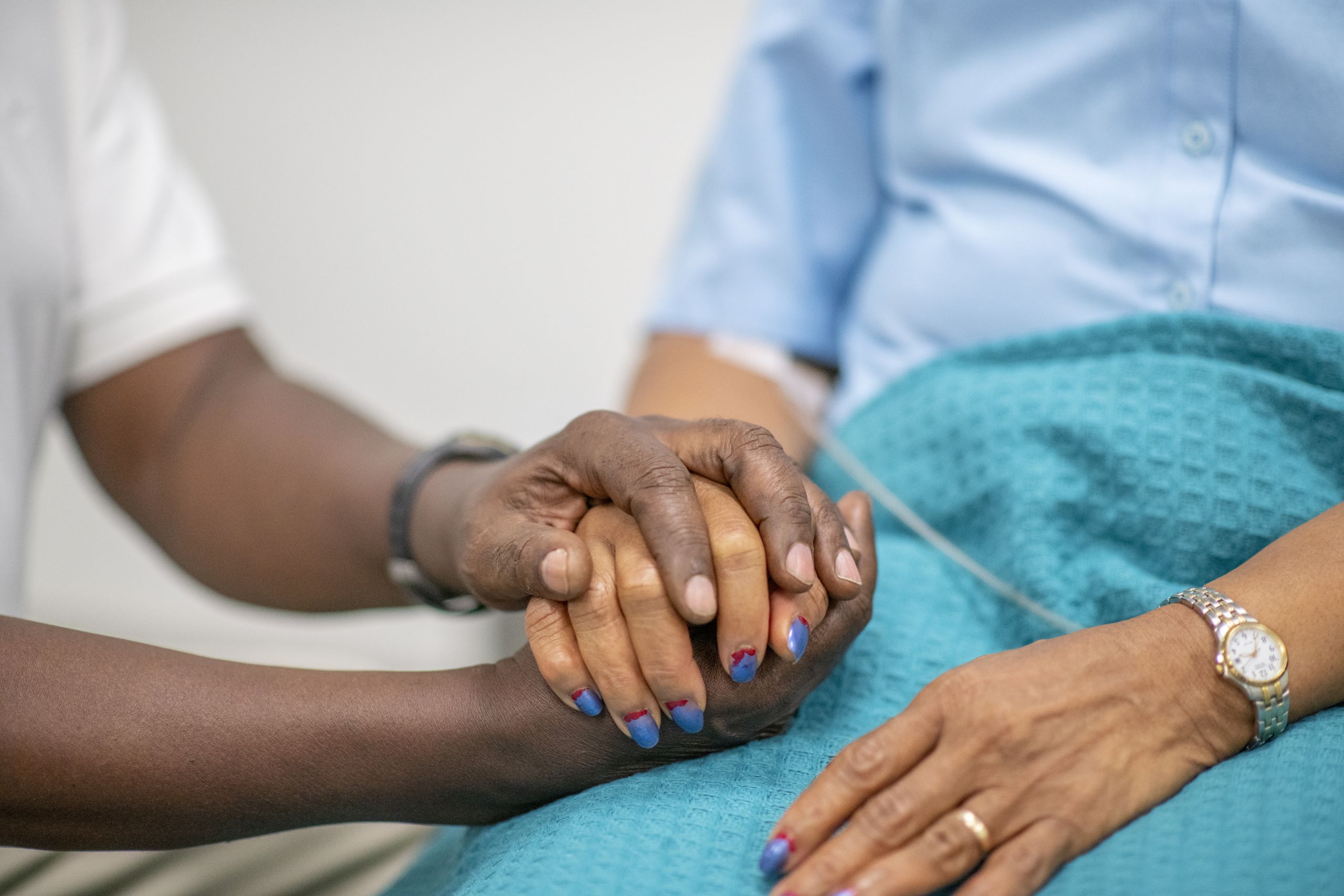
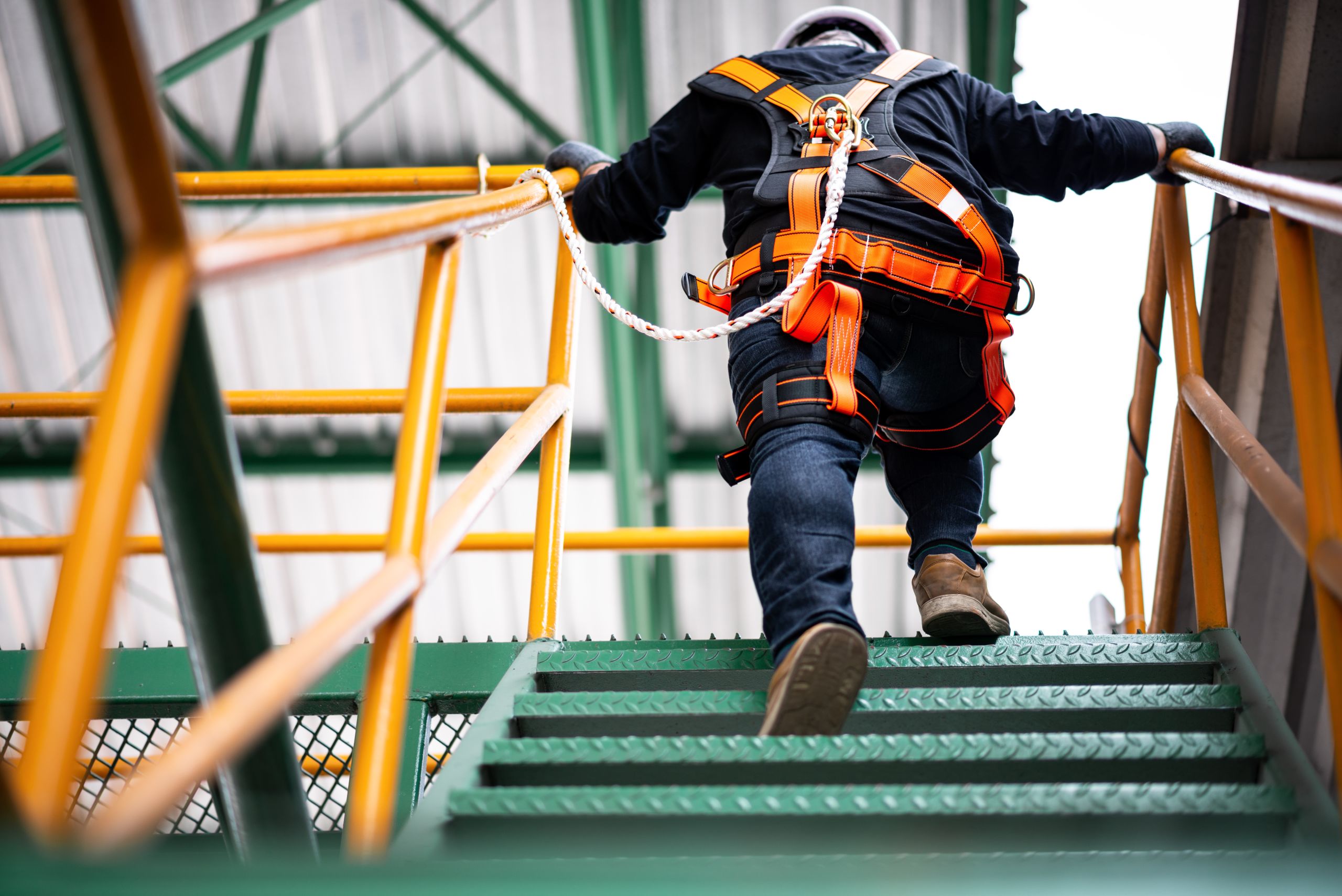

Privacy pitfalls in combatting coronavirus digitally: Lessons from South Korea
Dr Michael Prentice
As the UK embarks on rolling out new digital and mobile capacities in the fight against COVID-19, other countries may serve as bellwethers for potential issues. Dr Michael Prentice, Research Fellow in Digital Trust and Security, discusses privacy issues that arose in South Korea’s technology-driven response to the COVID-19 outbreak and how this could inform the UK Government’s response.
South Korea is generally held up as an example of a strong technology-driven response to stemming the COVID-19 outbreak. The country’s efforts at tracking the spread of the coronavirus through contact tracing were praised. Beginning at the peak of the outbreak in February, South Korean citizens received hour-by-hour detailed information on when and where potential infected persons were located via text messages, Facebook, domestic blogs, and Twitter. Citizen-based participatory efforts at visualizing the spread of movement via maps and apps allowed citizens to check whether they had crossed paths of suspected infected patients. This capacity has relied on a strong infrastructure for IT and surveillance and social acceptance for public monitoring.
Invasions of privacy?
However, as reported by the BBC and The Guardian, this information-robust response has spurred concerns about privacy risks. South Korean media (in Korean) have been rife with concerns that for many, the potential invasions of privacy are more “terrifying” than contracting the disease itself. A district office in Seoul had to issue a public apology for leaking personal information of a potential patient, and a health centre in the city of Pohang is under investigation for releasing a patient’s name and address. These offices are likely to face fines for mishandling private health data.
Like the EU’s General Data Protection Regulation (GDPR) instituted in 2018, South Korea’s Personal Information Privacy Act (PIPA), instituted in 2011, strictly protects ‘personally identifying information’ (PII) as key points of protection for organisations that collect or handle individual data. Individual leaks of identifying information, such as name, address, workplace and religion, pose risks to individuals, especially those in bio-vulnerable circumstances.
Judgements on (in)appropriate behaviour
One of the lessons the South Korean case raises is the broader circulation and utility of non-personally identifying information, such as ‘movement’ or ‘contact tracing’ data. That kind of data does not reveal specific PII, but even anonymised, de-identified information from highly transparent sources can pose social risks.
One risk is the revelation of what we might think of as socially identifying information, such as recognisable social types, places, or actions. As the Chosun newspaper in Korea reported, a person who was reported to have visited a hotel and a plastic surgeon’s office was ridiculed online for inappropriate behaviour. And as the Washington Post noted, one million citizens in the city of Daejeon received text messages about a visit by an infected person to a karaoke bar at midnight, which led many to assume the person was having an affair.
Another evident risk is being dubbed “secondary damage” from revelations of overly descriptive geographic patterns. Yonhap news reported that an apartment building in the city of Incheon had an outbreak owing to a small cluster of members of the Shincheonji church (the group through which the largest outbreak in Korea occurred) who resided there. The apartment building was labelled “Shincheonji apartment” online, stigmatising those who lived there but who were not church members. Apartment names, small neighbourhoods, and franchise businesses can face this kind of secondary or associational damage.
Reducing secretism
The emphasis on rapid, widespread, and accessible data on movement of patients from the South Korean government is not a cultural disposition; rather it comes from the response to the Middle East Respiratory Syndrome (MERS) outbreak in 2015. At the time, the government was criticised for not publicising hospitals where patients were being treated. A 2016 White Paper (in Korean) from the Ministry of Health and Welfare advocated for the swift release of movement information to combat accusations of bureaucratic secretism.
However, the actual level of technological coordination involved in tracking COVID-19 – said to involve credit cards, mobile GPS, transportation cards, and CCTV – has been overstated. Coordination was actually hampered by privacy regulations and inter-organisational logistical issues. Many of the actual ‘movement reports’ were assembled from oral reports, not big tech; they also included intimate details that are not personally identifiable, but not necessary to report either. Such reports may make the government accountable to the public, but they may not be the most useful for sharing information in widespread crises.
The National Human Rights Commission of Korea (NHRCK) has recently issued a warning about the excessive nature of information about private lives being released, leading to harms such as criticism, mockery, and revulsion. This may increase feelings of paranoia as the stigma associated with the virus may linger longer on places and people than the virus itself. South Korea has issued new guidelines as a result.
What UK policymakers should be aware of
The South Korean case indicates that the public can become over-interested in even anonymous information. This can lead to increased paranoia, stigma by association, or panic around certain social groups, and alert fatigue. While the UK and other countries may attempt to model the success of public health strategies used by South Korea, Singapore, or Israel, those countries’ policies are also shifting as the pandemic has evolved. Korea, for instance, is moving away from contact tracing, to more generalised quarantine guidelines for the public. A new announcement to coordinate better amongst 27 public and private organisations to deliver rapid contact tracing information will be used primarily for health authorities’ analysis and response, not for public information.
NHSX is currently assessing a new contact tracing app. UK policymakers should be aware of the potential pitfalls and over-promises from South Korea and strike a balance between what is necessary for public health and what information is not just personally identifiable, but socially identifiable. The UK already has experienced instances of anti-Asian sentiment in the early stages of reporting, and social fears or geographic stigmatisation could be confirmed or exacerbated through the specificities of information design. Even well-designed apps can provide a false sense of safety if only a limited segment of the population downloads it. (Korea for instance has only had a 35% success rate in having overseas travellers download a self-isolation monitoring application.)
South Korea’s privacy regulations include a special article that waives certain penalties and restrictions on the temporary handling of private data during a public health crisis. Yet they have not breached other privacy norms, such as making quarantine/tracing applications mandatory. They have even promised to delete any collected information after it is not needed. Therefore, while UK organisations should follow existing GDPR requirements as well as updates from the European Data Protection Board and the ICO, they should exercise caution in broaching privacy norms and expectations, even in a time of crisis.
Originally published 3 April 2020



Supporting the mental health and wellbeing of young people during the school closures
Dr Terry Hanley
Following Government announcements relating to COVID-19, the majority of children and young people will be getting used to not going to school. Dr Terry Hanley discusses what this could mean for young people’s mental health and wellbeing.
The worldwide COVID-19 pandemic is creating an enormous amount of anxiety. Most of this relates to physical health, but the World Health Organisation recently started raising the issue of mental health and wellbeing. This is wide ranging and considers the impact upon everyone, including the general public and care workers. Importantly, it goes beyond the physical and includes issues such as the stigma that people might encounter if they are viewed as being unwell and the concern that people have about contracting the virus (themselves or others). As a response it directs professionals to the mGAP Humanitarian Intervention Guide, a thorough statement on principled responses to need.
Figure 5. 83% of young people reported their mental health to be worse throughout lockdown.
Where it is less clear, however, is in considering how professionals will remotely support individuals in need of support whilst people practice social distancing or self-isolate. Such issues have become increasingly important as workplaces encourage home working and education providers have now closed for a potentially long period of time. With young people and young adults increasingly finding themselves losing access to valuable psychological support services, offering an online alternative could be one means of filling this gap.
Face-to-face services compared to online support
For years, face-to-face support has been the primary means by which therapeutic support has been offered. Online therapy has however been evolving in the background for many years and, although there has been a steady reluctance to engage with mediated support by professionals, the desire to access such support by the general public has increased dramatically. For instance, one online counselling service for young people in the UK receives over 2,000 log-ins each day. Such a pattern is echoed by numerous mental health and wellbeing services.
Research has proven very positive for online provision. Effectiveness studies have shown similar results to face-to-face work and individuals accessing services report the relationship to be of a similar quality.
For some, there are even novel benefits, with individuals preferring to access services online and being more willing to talk about the issues they face online than face-to-face with a therapist. Organisations are even beginning to question where therapeutic relationships begin and end. For instance, whereas many people might view online therapy as taking what is offered face-to-face and offering it online, technologically savvy organisations are aiming to enrich the therapeutic work directly with professionals by providing other resources as well. They are creating what might be viewed as ‘positive virtual environments’ in which individuals can access multiple resources such as information sheets, forums to access peer support, email therapy, chat room therapy and access to computerised therapy programmes.
Considerations in providing online services
However, those offering therapeutic interventions need to be both confident at using such resources and competent in using them properly. For instance, therapists need to be mindful of the differences in the way therapy unfolds online. People might open up about serious issues much quicker than they do in face-to-face relationships or they might access support in a public place where people can hear or see what is being talked about (most young people don’t want their family knowing personal concerns).
Also, people might end a meeting very quickly and the person supporting them becomes concerned about their wellbeing; having appropriate risk management processes therefore becomes essential. And there are clear GDPR issues encountered if people start using personal computers to engage with their professional worlds. Professionals therefore need to be aware of these differences and support the people they work with to be aware of them too.
How can we support young people during school closures?
Firstly, we need to keep thinking about the mental health and wellbeing of young people and young adults during this difficult time. It is important for service providers to be pro-active in looking after younger generations’ wellbeing, particularly those who might be isolated from others.
Secondly, offering online therapeutic resources might be one way to offer continuity of support (eg Kooth.com). Services can provide online therapy offered by professionals, supportive information that is responsive to current needs, and encourage moderated forum interactions with peers.
Thirdly, financial support will be needed to support the pressure on existing online services and fund organisations in making a transition to mediated support. For instance, professionals will need additional training and supervision to offer these services and appropriate technology will need to be purchased to offer it.
The government has talked a lot about transforming mental health and wellbeing services in recent years. Much of this discussion has been about extending the remit of schools and has not referred to the way that technology might be used to support ‘digital natives’ (individuals who have grown up in a world that has always had the internet). Maybe the current circumstances, and the need to provide support services online, will be the catalyst that makes them take this leap.
Originally published 23 March 2020



The voluntary and community sector and COVID-19: Going to war without ammunition?
Sophie Yarker, Kirsty Bagnall, Tine Buffel, Patty Doran, Camilla Lewis and Christopher Phillipson
COVID-19 has forced us all to rethink how to maintain social connections in the neighbourhoods where we live and work. For the voluntary, community and social enterprise sector (VCSE), this has meant a rapid rethink in how to provide services whilst observing social distancing guidelines. Here, Sophie Yarker and Kirsty Bagnall, along with Tine Buffel, Patty Doran, Camilla Lewis, and Chris Phillipson from the Manchester Urban Ageing Research Group (MUARG), discuss the challenges the sector is facing and suggest an alternative approach to providing support.
Whilst the demand on organisations continues to increase, their ability to respond to COVID-19 has been substantially reduced due to cuts in public sector funding, which has reduced or disappeared over the years. Research suggests that smaller charities (with annual incomes of between £100,000 and £500,000) lost nearly half of their income from local government in the five years following the 2008 financial crash. On top of cuts to their own funding, the social infrastructure that supports the third sector has also been under attack. Some examples include: 12,000 public spaces sold in the past decade by UK Councils ; the closure of libraries (800 since 2010); the privatisation of leisure centres; and the decline of local shopping centres in many areas. All of of these developments have led to the decline of spaces vital for social participation. The present crisis has further revealed inequalities in the extent to which neighbourhoods are able to respond to the challenges arising from COVID-19. The presence of mutual aid networks, for example, has emerged overwhelmingly in places with strong neighbourhood networks and a thriving social economy. Such communities are much better equipped to develop responses, as compared to those with less capacity to mobilise resources and reach out to vulnerable groups. The COVID-19 crisis is thus amplifying existing inequalities between poorer and richer neighbourhoods.
Reducing social isolation in a time of social distancing
VCSE organisations are a vital part of the social infrastructure of neighbourhoods providing places of support, advice and social contact. As such, the sector is particularly important for older people, who are often more reliant on their immediate locality for both social participation and support. VCSE organisations have increasingly been tasked with mitigating social isolation and loneliness for older people by providing opportunities for social interaction with others. The question, then, is how can initiatives aimed at reducing social isolation continue to be delivered in the context of social distancing?
Our research into tackling social isolation and building age-friendly communities in Greater Manchester has identified several innovative ways community organisations are responding to the challenge. The majority of Age UK branches, for example, have moved their services online or by telephone, with branches trialling new approaches to addressing social isolation. Infrastructure organisations, such as local community and voluntary services and organisations, whose operations are based around food, have moved towards direct services, co-ordinating and providing food parcels, and managing volunteers. And ethnic minority organisations, such as Europia, have developed informative videos for a number of communities for whom English is not their first language, and would therefore miss out on important information about COVID-19. In many cases, this extends the vital work organisations have already been doing to reach the most marginalised groups in our communities.
Figure 6. 84.3% of people provided support via shopping to non-household members
Unequal impact
Not only do the uneven impacts of austerity challenge the capacity of communities to respond to the immediate crisis of providing essentials such as food, medicines, support and advice, there is a significant risk that these inequalities become even further entrenched as the community and voluntary sector starts to re-orientate itself towards a future of working with social distancing.
One of the most pressing issues concerns the loss of funding. Back in March, the #EveryDayCounts campaign, led by NCVO, calculated that the charity sector could miss out on a minimum of £4.3bn of income between April and June 2020. At the beginning of April, the government announced a £750 million package to support the work of charities during the current crisis. This support, whilst welcome, is unlikely to be accessible to large parts of the sector. Many smaller organisations are likely to miss out, despite the injection of funding.
Over 80% have an income below £100,000; those with an income over £1 million are fewer but account for more than four-fifths of the sector’s income. There is a substantial risk that emergency COVID-19 funding will disproportionately go to larger voluntary organisations, with concerns those with the most resources will apply first and take most of the money allocated. The latest State of the Sector survey carried out in 2017, showed that 46% of VCSE organisations in Greater Manchester have less than three months of running costs in reserves, a major concern given the depth of the crisis facing communities.
An alternative approach
We have already seen many within the VCSE sector using emergency funding and reserves to rise to the challenge of adapting existing projects in response to the challenges posed by COVID-19, from coffee mornings moving online, telephone-supported digital inclusion courses, and craft clubs introducing postal delivery of materials, to allotment groups making adaptations around social distancing and hygiene measures allowing them to return.
However, there is a further, more complicated challenge in creating means of new social connection, rather than adapting what already exists. Reaching and supporting those who do not already have connections within their local communities is made all the more difficult by the pandemic. Organisations will undoubtedly require financial support but this is unlikely to be sufficient to meet the challenges facing voluntary groups – especially those working in poorer communities. Based on findings from our research in Greater Manchester, we argue an alternative approach is required, one which allows organisations to test new ways of working, invest in skills and leadership, and share learning about new ideas.
Offering smaller pots of money for investment (up to £2000) can encourage organisations to take more ‘risks’ and to be more innovative with their ideas, knowing that they do not have to ‘get it right’ first time. The learning from projects that have not gone as planned can be just as useful if shared through networking events and co-operatives. Examples from the Ambition for Ageing programme include a Crafting Co-operative in Bury set up to bring together local groups interested in craft work, and in Bolton networking events were set up in each ward to bring together those who had received similar funding to share their experiences and future plans with each other.This could be supported by a delivery and management approach that prioritises relationships and dialiogue-building by, for example, giving contractors a set of quality standards from which to design their own specific goals and targets which reflect the needs of the communities they work with.
This more flexible approach will be essential for the community and voluntary sector to respond effectively to the new context of social distancing. This requires a closer dialogue between organisations and funders to allow organisations the time and support to do this work. This aspect will be crucial for equalities organisations who themselves are the least resourced yet working with those who are often affected the most by COVID-19. This might mean adjusting procurement and commissioning to reflect a more flexible test and learn approach, and methods of monitoring and evaluation may also need to be revised to reflect different goals and outcomes.
However, any recovery or indeed reinvention of the sector will be shaped and constrained by place-based inequalities. For older people living in low income communities, who are already more at risk of social isolation, a declining community and voluntary sector will mean less support available on their doorstep and less opportunities for social and civil participation. Alarming statistics from the ONS reveal that those living in the poorest parts of England and Wales are twice as likely to die from COVID-19 than those living in more affluent areas. Far from being a ‘great equaliser’ this highlights the seriousness of the crisis facing our already most besieged communities.
Originally published 16 June 2020
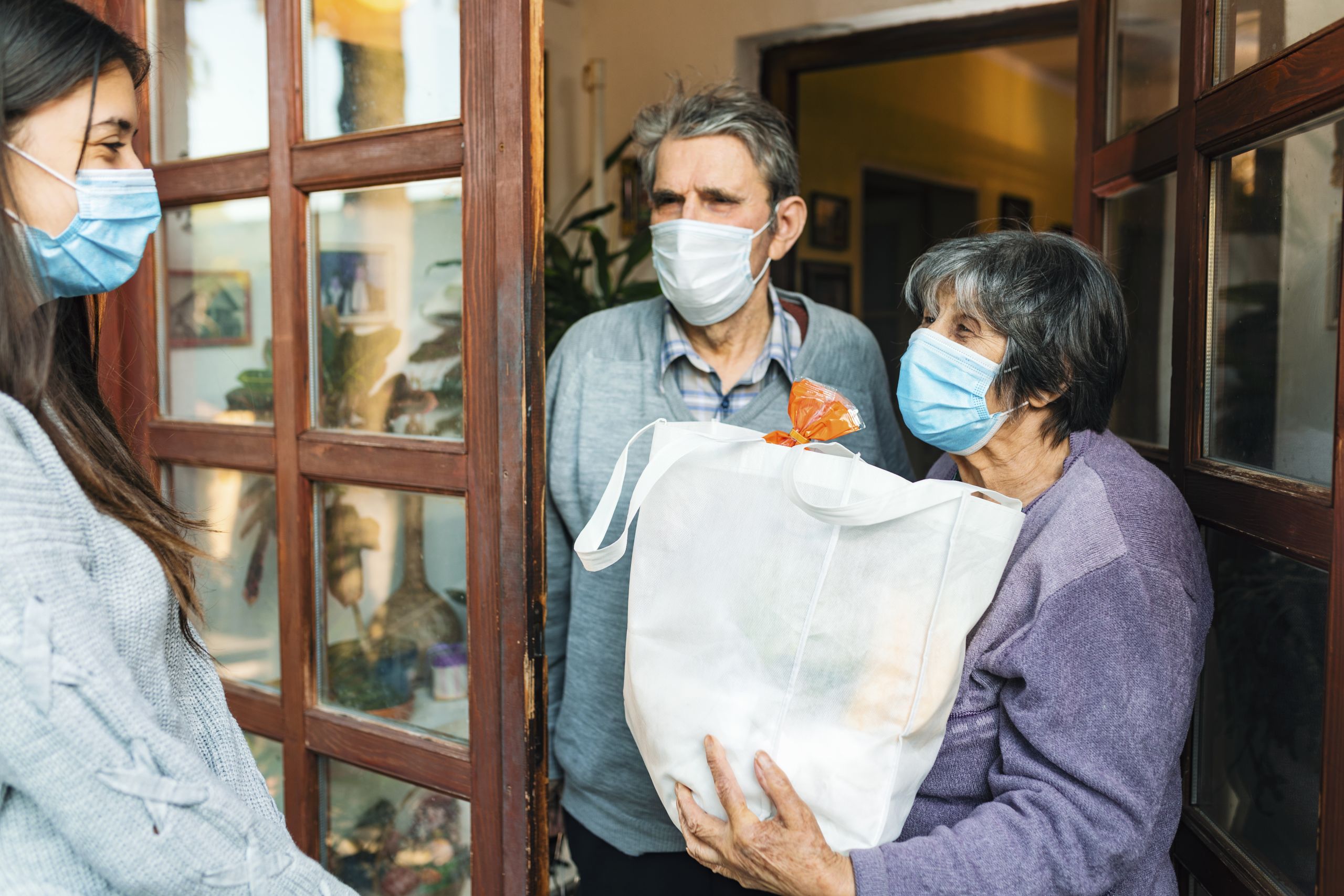
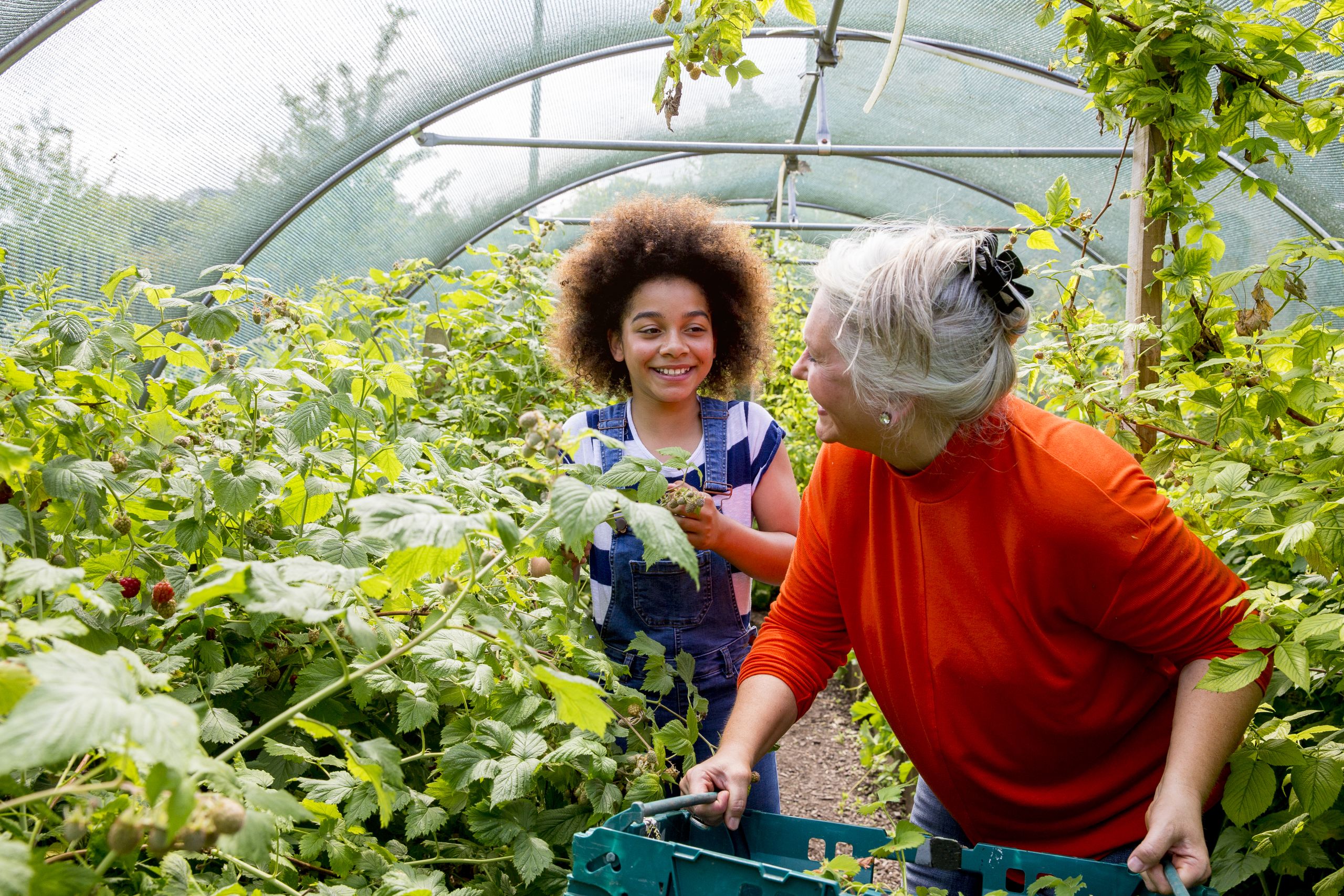
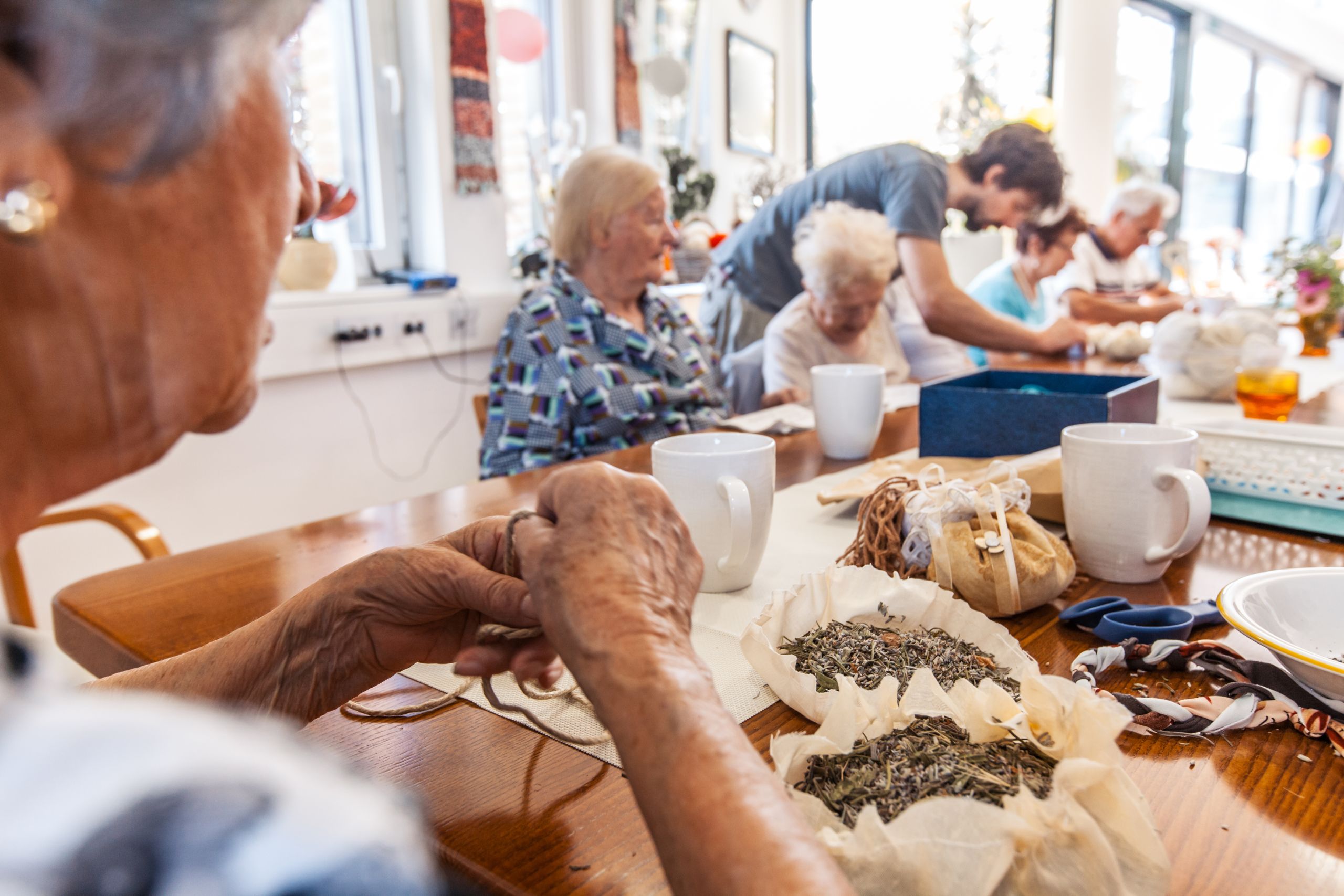
How modelling can become a debate-support tool, not just a decision-support tool
Professor Graham Haughton, Dr Nuno Pinto and Professor Iain White
As many politicians around the world inform the public of their responses to the coronavirus outbreak, they frequently refer to the science on which their decisions are based. Professor Graham Haughton, Dr Nuno Pinto and Professor Iain White explore the changing nature of how modelling tools are forming political and public debate.
Predictive risk models used to inform policy necessarily balance complexity with simplicity, grappling with data limitations and scientific uncertainty before being often reduced to simple messages to communicate findings to the public. In the current COVID-19 crisis, politicians around the world claim to be basing their decisions on ‘the science’, very much in the singular, effectively making claims on the authority inherent in science to help support what are inevitably political decisions. The outcry over the ‘herd immunisation’ theory that was initially discussed in relation to the UK response quickly revealed the political nature of science, as not only did other countries interpret their ‘science’ differently, but scientists quickly broke cover to challenge the assumptions involved. Very quickly other aspects of the modelling work relied on by the UK authorities generated scientific debate that carried over into the public arena, as the ‘black box’ of mathematical modelling was opened up and subject to critical debate about both the model and scientific practices. The singular ‘science’ of the early pandemic rapidly turned into a valuable global public discussion of alternative models, assumptions, and futures, and about the need for more transparency and greater openness in sharing data.
How modelling tools can support debate
The underlying context here is that models are often viewed as expert-led ‘decision-support tools’, designed by objective scientists to inform politicians, much more so in times of emergency. However, their use in COVID-19 quickly evolved, such that they took on a valuable additional role as public ‘debate-support tools,’ improving scientific literacy and enabling people to better understand future contagion risks. This latter approach takes modelling beyond providing evidence to support expert decisions, to instead fostering public debate around alternative policy options and alternative models, and the value judgements underpinning them, never more clear than when New Zealand’s Prime Minister declared that she had never considered ‘herd immunity’ and that the country’s population would find it unacceptable, with Donald Trump similarly rejecting the idea. The value of using models to create new spaces for public dialogue is that they can help reveal flaws in logic, judgement, design and potential implementation, highlighting areas of disagreement whilst building consensus around the most desirable options, in the process stimulating political as well as scientific debate.
Incorporating spatial variation
In short, what we have seen in COVID-19 is how mathematical models quickly morphed from decision-support to debate-support, and from the province of elite experts to being discussed in households around the world. We want to argue that we can go much further however; by combining a wider range of data and giving spatial expression to this we can help shift from the emergency response phase to better planning for future events. In particular, there are important opportunities for how we collect, analyse and represent data in the future.
At the moment, most of the modelling work presented to the public has drawn on mathematical modelling and by now familiar versions of graphs revealing actual and expected exponential growth curves, including variants of ‘flattening the curve’ of the epidemic peaks to levels health systems can cope with. These have proven very effective as simple visual representations of the limited data available and the need for clear public messaging. However, despite the complex modelling behind them, these diagrams still simplify reality. For instance, treating nations as a single space means that we still do not understand the reasons for how, where and when particular hotspots emerge within nations, as the disease spreads unevenly in a process that is likely to require increasingly locally tailored policy interventions. Particularly once the current round of national restrictions starts to be rolled-back and more widespread testing undertaken we might reasonably expect to see much more localised responses to future outbreaks and for this we need local data to be released quickly to the wider modelling community, particularly spatial modellers.
As the pandemic progresses and large-scale population testing of exposure is rolled-out, we can and must do more, and it is here that spatial modelling and mapping can help. Thanks to advances in geographical information systems (GIS) and open source software and data, intelligible models and maps can be quickly produced, refined and updated; used well they can be powerful tools for both analysis and public communication, but used poorly they can cause resentment or a backlash, as has sometimes happened with hazard maps for coastal retreat or flooding.
The importance of including local knowledge
Releasing finer-grained data around the spread of COVID-19 could allow modellers to develop a better understanding of factors that might contribute to controlling the spread of the disease without falling into too much aggregation or, worse, lack of transparency. For instance, detailed location data from smart phones have helped Singapore and South Korea to maintain a very low initial growth in cases, not without loss of privacy. But it will also help if we can build into our models a wider range of data sources. In Germany, Heinsberg, one of the hardest hit areas, has been adopted for a study collecting a very wide range of data to improve understanding of how the virus spreads across space and different social groups. There is a further step needed, however, of ensuring that the results of the modelling are presented effectively to local populations and experts so that they can help ground-truth the results, checking them against their local knowledge and lived experiences. This is one of the lessons we learn from flood risk mapping: computer modelling has vastly improved our understanding of large-scale catchment dynamics, but sometimes causes public anxiety when poorly communicated or perceived to be at odds with local knowledge.
The value of spatial modelling is it can help us understand more about why some areas, whether cities or neighbourhoods, have lower or higher levels of mortality than others. However, to avoid falling into the trap of earlier modelling exercises during the COVID-19 pandemic, lessons need to be learned about how to present the results openly in ways that foster debate amongst fellow scientists, the public and politicians.
Originally published 21 April 2020



Levelling up regional resilience
Dr Marianne Sensier and Dr Elvira Uyarra
Dr Marianne Sensier and Dr Elvira Uyarra have conducted research comparing the economic resilience, community wellbeing, sustainability and governance of Greater Manchester and Preston in recovery from the 2008 financial crisis. The financial crisis provided a window of opportunity for some places to develop new arrangements to adapt and diversify regional economies. Here, they explore the lessons learnt from the financial crisis that could help in recovery from the COVID-19 crisis.
Regional economic resilience is the capacity of a place’s economy to withstand, recover from and reorganise in the face of market, competitive and environmental shocks. Shocks might be global (the 2008 financial crisis and the 2020 coronavirus pandemic), national (1990s house price crash) or local (closing of a factory) in origin. But what makes a region more resilient?
Academics point to factors such as the concentration of related industries in a local economy, access to knowledge networks and good quality and adaptable institutional and governance structures. In a study on the effect of the 2008 financial crisis on UK regions, we found that those areas with greater shares of: knowledge-intensive and high-tech services, higher-level qualifications, and managers and professionals had higher output, jobs and productivity growth rates in recovery from the financial crisis. We found that the South East of England was the most resilient region to the crisis, while the North East and Yorkshire and Humberside regions were the least resilient along with Northern Ireland.
Regional differences in wellbeing
It is important to understand resilience in not just economic terms but also in terms of wellbeing of citizens and the sustainability of places. In another study, we compared measures of resilience and wellbeing and found that while the City of Manchester scores highly for economic resilience, it ranks the lowest of all the districts of Greater Manchester for inclusive growth in local conditions, with lower rates of healthy life expectancy pulling down this measure. Peripheral districts, like Bolton and Wigan, have been the least resilient, suggesting that policies targeted at dense agglomerations have not benefitted surrounding areas. Preston, in following community wealth-building policies, has had a more equitable recovery and is improving wellbeing for its citizens.
The UK has large regional economic and social disparities and these have widened since the financial crisis. The current government has stressed the need to level up across different regions, which reflects the failure of an overly centralised style of governance and a decade of austerity, which has exacerbated rather than ameliorated inter-regional differences.
Regional resilience to the COVID-19 pandemic
It is fair to assume that those places least economically resilient in the recovery from the 2008 financial crisis will also be least resilient to this current crisis. The uneven economic impact of the pandemic has been analysed by the Centre for Towns and City REDI. Data on consumer spending during lockdown show that rural places that rely heavily on tourism have so far been hardest hit. We assume that as countries gradually emerge from lockdown an adjustment process will ensue to a ‘new normal’ until a vaccine is available. Social distancing measures are likely to continue in some form and this could inflict lasting economic damage. In cities, agglomeration advantages may turn into disadvantages, requiring significant investment to adapt the transport and urban infrastructure (on which agglomeration advantages depend). In this crisis, the consequences of inequality have been laid bare. The COVID-19 pandemic has already been shown to hit poorer areas more. High-density urban areas with high incidence of health inequalities and deprivation such as inner London, Birmingham and Manchester have suffered outbreaks and death rates significantly worse compared to rural areas in England and Wales.
The role of local government
The pandemic has also underlined the importance of local decision-making in times of crisis. In England, government action to respond to the pandemic has been highly centralised, with some resources redistributed by local authorities (grants and business rate relief). Local authorities have been at the forefront of fighting the pandemic, in critical areas such as health, social services and economic development. However, their capacity to react is depleted after years of austerity; and the higher costs of fighting the pandemic and the loss of commercial income is threatening the delivery of essential local services. The limitations of England’s centralised system of governance and lack of a coordinated strategy across levels of government has been evidenced by the UK’s slow testing response compared to other countries such as Germany.
In recovery from the current crisis, the levelling up talk must become a reality. The fact that recently announced central government bailout allocations to local councils in England appears to take no account of deprivation levels is not a good sign. To be meaningful, local and national policy should be directed at regenerating sustainable and equitable regional economies. Resilience is not the same as rebounding – it does not mean returning to the pre-shock state of affairs. As many have argued, the crisis presents a window of opportunity to embrace changes towards a more sustainable and fairer economy. This includes revaluing ‘key workers’ and the foundational economy in which they work. Unlike in the 2008 crisis, government bailouts to rescue specific sectors of the economy such as retail, property or aviation, should come with strong strings attached in terms of environmental, tax and civic responsibility. More collaborative and co-operative approaches are also needed to share the proceeds of growth more equitably.
Having seen the benefits of clearer skies and streets emptied of cars, political leaders in the north of England have suggested lasting improvements such as building cycling and walking networks, boosting internet connections and retrofitting of houses to improve energy efficiency and create jobs. Local industrial strategies should include measures to incentivise green innovation in areas that contribute to sustainable social value in economic recovery. The pledge for increased and geographically better-balanced R&D expenditure is more important than ever, and so is a reversal of years of centralisation and austerity cuts so that councils have greater capacity and revenue funding to plan and react faster and respond to future crisis. We now need bold economic policies to transform how our economy provides for citizens and the planet before this window of opportunity closes.
Originally published 12 May 2020



From lives vs. the economy to lives vs. lives: Global South lessons on reframing the lockdown debate
Dr Juan Manuel del Nido
During the weeks of lockdown in the UK, the Government has talked about the balancing act between saving lives and saving the economy. But is it right to talk about these two things as if they are completely separate? Dr Juan Manuel del Nido explores the interdependency between lives and the economy, and how the UK can learn from experiences in Argentina.
The UK’s ruling class has framed the lifting of the lockdown as a balancing act between ‘lives’, a proxy for COVID-19’s strictly organic impact, and ‘the economy’, a proxy for the allegedly purely material consequences of the lockdown. Some among the establishment have attempted to reframe lockdown public debate by insisting that resulting economic destruction will also impact life: internal governmental reports warn up to 150,000 lives could be lost as a consequence of the lockdown itself, due to anything from children going unvaccinated to cancers going undiagnosed. Yet a sort of fundamental division between lives and the economy continues to be taken for granted; recent declarations from members of cabinet that lifting the lockdown too early would jeopardise both ‘lives’ and ‘the economy’ still presume that these are different things that need to be managed jointly. Any insistence on lifting the lockdown takes on a morally toxic tone, an increasingly thorny position since the public revelation of the Office for Budget Responsibility’s report on the catastrophic impact of the lockdown on British life.
Experiences in Argentina
Political, cultural and economic differences aside, and irrespective of the particulars of epidemiological modelling, Argentina’s dealing with the lockdown as a state policy offers a particularly urgent lesson for UK policymakers. Under immense pressure from a near-unified public opinion, on 20 March 2020 Argentina implemented a nationwide lockdown aimed at containing COVID-19. Like elsewhere, Argentine authorities insisted on the imperative to save as many lives as possible at any cost; but that narrative was quickly subsumed under a cross-party, general, vocal and mainstream reframing of the dichotomy of ‘lives vs. the economy’ as one of ‘lives vs. lives’. This was a work done by the ruling political class and it afforded Argentine authorities a political, economic and rhetorical leeway out of the depths of the lockdown – and its popularity.
When Argentina’s economy collapsed in 2001, 25% of national GDP was wiped out virtually overnight. The following years saw a marked increase in suicide rates, strokes and hypertension. Also, in one of the first studies ever of its kind in the world, the Favaloro Foundation and the University of Massachusetts estimate the stress over pauperisation and the destruction of jobs and livelihoods led to an extra 20,000 deaths by heart attack. The Pan-American Health Organisation reports the degradation of public services increased inequalities, child poverty, malnutrition and deaths across all age groups from treatable diseases for years. Argentines intimately know that ‘the economy’ is quite literally about lives, a lesson unique for its magnitude in world history that public policy in the UK would gain to learn from.
Along different lines but with the same purpose, Argentine intellectual Diana Maffía recently made the case that for years now the WHO has considered gender-based violence also a pandemic – one that the lockdown is severely worsening, according to evidence from Argentina and the rest of the world, leading to death and severe and long-lasting mental health issues. Argentine national and provincial governments created ways to except women and children at direct risk of domestic abuse from lockdown rules as a result (as well as residents in the autistic spectrum and other different abilities), but the crucial point here is the success these interventions have in visibilising the lockdown itself as a direct threat to life. Similarly, authorities made a point of drawing attention to the fact that lockdown is exponentially increasing cases of dengue, considerably more serious and deadly than most estimates of COVID-19’s impact. Again, beyond the specifics of diseases which do not exist in the UK, the point is that such approaches help create an urgently needed more complex understanding of the lockdown’s impact to the lives it was set up to save.
Reframing the lockdown conversation
Some of this work is already being done in the UK: earlier this month, the project Counting Dead Women reported that domestic killings have doubled during lockdown in the UK. But Westminster stakeholders are not incorporating these findings in a sustained, public policy exercise of reframing what the lockdown is and what it does to life. Lastly, it is worth noting that the narrative work of reframing the lockdown as a matter of life in Argentina did not hinge on challenging the seriousness of COVID-19, simply on emphasising the threat to life of the lockdown itself, shifting the debate from a simplified either-or take.
These rhetorical strategies are all the more urgent in the UK to prepare public opinion and political debate to the fact that any lifting of the lockdown is likely to be linked to a surge in COVID-19-related deaths. The case to make is the lifting will save lives from the lockdown. Argentine evidence shows that reframing the terms of public debate would allow UK policymakers not just to find the ways to ease the lockdown, but to persuade a population highly in favour of it that neither the moral nor the public health case for it are as straightforward as they seem now.
Originally published 5 May 2020



Profiting from pandemics: COVID-19, changing routines and cyber crimes
Dr David Buil-Gil, Professor Nicholas Lord, Professor Emma Barrett, Professor Daniel Dresner and Brian Higgins
The COVID-19 crisis is driving changes in the routines of institutions and individuals, as businesses, educational institutions and other organisations recommend or require employees to engage in social distancing in a collective attempt to minimise the spread of the virus. As well as having global socioeconomic effects, these changes in routine create opportunities for crimes. Dr David Buil-Gil, Professor Nicholas Lord, Professor Emma Barrett, Professor Daniel Dresner and Brian Higgins examine what these new crime opportunities might be, and how we might mitigate the impact of digital security issues.
Home working, routine activities and cyber-victimisation
The move towards home working is affecting a large proportion of the population. Those directly affected by the virus are encouraged to self-isolate, and many companies are asking employees to work from home. This has obvious impacts on citizens’ offline and online routine activities. For instance, many people will now be using their personal computers to access business information and web conferencing will be taking the place of in-person meetings. The number of people out on the streets will decrease dramatically and online shopping will likely grow as a way to purchase products and services. Businesses will most likely remain empty while homes will be occupied most of the time. All these changes are already affecting opportunities for crime.
The volume of residential burglaries will probably decrease in the following weeks, given that many will remain at home throughout the day and serve as guardians of their households. Pickpocketing is also likely to decrease around tourist attractions with fewer people to target. Nevertheless, the COVID-19 crisis may have the opposite effect on burglaries at businesses, since shops and companies may be targeted by criminals given the extended time that these remain empty, and domestic abuse rates are likely to grow.
The fact that many employees will begin using their personal computers and laptops to conduct business-related activities from home is also likely to increase digital vulnerabilities and cyber-victimisation. Many personal computers suffer from poor software protection, whereas office-based business-owned computers tend to be better protected against computer viruses. For instance, our preliminary analyses of the UK Government’s Cyber Security Breaches Survey suggest that companies that allow employees to use their personal computers to conduct business activity increase the likelihood of suffering cyberattacks by more than 20 percent. So we can expect the rate of cyber security breaches to increase in the coming months. But there are other cyber crime-related issues that are also likely to arise.
Online frauds and phishing
The internet allows for an increased visibility and accessibility to crime targets due to the absence of online guardians and the frequency and variety of everyday activities that users conduct online. If the COVID-19 crisis multiplies the number of users of e-commerce systems, either because persons with symptoms are self-isolating or because citizens spend more time at home to prevent contagion, it is also likely that new opportunities for online fraud will arise.
One may expect that the more online shopping there is, the more opportunities for cyber-criminals to target victims online. Moreover, the growing concerns about the spread of the virus create new opportunities for the selling of fraudulent coronavirus-related products. UK Action Fraud (the UK’s reporting centre for financial cyber crime) has so far identified more than 20 scams directly related to the pandemic, with victims’ losses greater than £800,000. The most prevalent example is the selling of disposable dust or surgical masks instead of recommended protective equipment, or the selling of masks that are never delivered. Other examples are the selling of bogus coconut and kale ‘cures’. Amazon has already removed more than one million fraudulent products. Moreover, cryptomarkets, which are typically used to pay for drugs, computer viruses and credit card details, are now being used to sell surgical masks and even coronavirus-infected blood.
Cybercriminals abuse public concerns about coronavirus in phishing campaigns, with bogus emails (see Figure 7) deployed to harvest login details from victims. Offenders also exploit the altruism of those who want to help: Kaspersky has reported fraudulent emails asking users to donate Bitcoin to support the finding of a vaccine. There are also reports of online ‘coronavirus maps’ designed to disseminate malware and steal passwords.
And criminals will entice victims with almost-credible promises in forged government notices, such as the one below in Figure 8.

Figure 7. Fraudulent email
Source: Proofpoint

Figure 8. Forged Government notice
Source: Yorkshire and Humber Regional Cyber Crime Unit
What can organisations do?
The most effective strategy to prevent cyber crime is to develop training and awareness programmes specific to internet exposure risks. So, organisations asking employees to work from home should make sure they alert employees to the risks they may face when conducting their activities from home. Point them towards reputable sources of guidance. For instance, Action Fraud, the Financial Conduct Authority and National Cyber Security Centre (NCSC) have published tips to prevent fraud and phishing scams during the coronavirus crisis.
Ideally, organisations should also provide equipment and software for employees to work from home, but in these extreme circumstances, many employees will need to use their own devices. NCSC has published guidance for organisations on developing a ‘Bring Your Own Device’ policy, much of which will be relevant to people working from home.
What can individuals and small businesses do?
Individuals and small business owners should put in place short-term measures such as taking snapshot backups and assuring access to the work of colleagues who may need to take time off sick. Doing this without messy password-sharing is essential.
In addition, they need to be aware of attempts to entice them into parting with their cash. When buying goods, they should use reputable suppliers to avoid supply frauds. It is essential to be cautious when dealing with emails asking for money or to authorise a financial transaction. In such circumstances, a quick phone call to a reputable number to check the request is genuine might save you losing money to criminals.
What can the Government do?
The UK Government needs to move quickly to identify and disavow attempts to target business and individuals. The cooperation with e-commerce providers will be key to prevent fraudulent products from being advertised, and UK Government agencies should establish dialogue with insurance companies to ensure that these can manage the impact of COVID-19 on their operations while protecting consumers’ rights.
It is key that agencies such as Action Fraud, the Financial Conduct Authority and NCSC keep updating their guidance on this. To reduce offline risks, businesses will no doubt be reviewing the security measures at premises that will be left empty.
In order to mitigate the impact of social isolation on women and children experiencing domestic abuse, many charities offer opportunities for support via online methods, but they need resources to continue, and local governments and police must also play their part. At a time when council and emergency service resources are stretched to their limits, responding to intimate partner violence could easily be forgotten. The government must ensure that it is not.
Originally published 19 March 2020



Transport and logistics during the COVID-19 pandemic
Dr Sheena Johnson and Dr Lynn Holdsworth
While the majority of the population is urged to stay at home, the country is relying on the transport and logistics sector to maintain the delivery of goods, and most importantly food and medical supplies, which have seen a substantial increase in demand. People working in the haulage industry are identified as key workers given the importance of maintaining a supply network during the COVID-19 crisis and related lockdown in the UK. There has been, though, relatively little open discussion about how the situation is affecting the industry and its workers. Dr Sheena Johnson and Dr Lynn Holdsworth discuss the changes to the working environment in the sector, and the support necessary for drivers.
As part of our research into the health and wellbeing of the ageing workforce within the transport and logistics sector, we set up the Age, Health and Professional Drivers’ (AHPD) Network, which works to highlight the importance of protecting the health and wellbeing of professional HGV drivers. Professional HGV drivers are an ageing workforce exposed to a variety of health risks linked to the nature of their work. The transport and logistics sector was already facing driver shortages and a struggle to maintain driver numbers given the high proportion of older workers approaching retirement, and the limited numbers of younger drivers entering the workforce.
The AHPD Network now wants to focus a spotlight on the impact the COVID-19 crisis is having on the industry, and its professional drivers. We argue the current situation, alongside the ageing workforce and the health risks associated with the job, brings the perfect storm of issues that could negatively impact on the professional driving workforce. We asked AHPD members to tell us what the situation is like for them as the industry responds to the COVID-19 crisis and draw on some of their answers here.
Changes in guidelines
Changes in regulations intended to help with the flow of goods have been implemented in the transport and logistics sector in response to COVID-19, including:
· Relaxation of driver hours to allow drivers to work longer hours;
· Relaxation of driver training requirements;
· Rule changes meaning drivers whose qualification card expires between March and September can continue driving without renewal;
· The exemption of MOT testing for vehicles for three months;
· Temporary removal of routine medicals to facilitate renewal of driving licenses.
These changes are likely to have implications for the health and safety of drivers, and companies have to manage a fine balancing act to keep goods moving and protect their drivers.
Impact on companies
Companies have been disparately affected, with some reporting being run off their feet, especially those involved in food distribution. Online orders have also increased. Others though have seen their work dry up almost completely, with an estimate of nearly 50% of lorries currently parked up. Companies that are still moving goods have been affected by staff absences due to shielding, childcare or sickness. Whereas some companies have been able to provide full pay to individuals not able to work or have taken advantage of the Government’s furlough scheme, others have offered no more than statutory sick pay, which may encourage people to work whilst unwell for financial reasons.
Impact on individual drivers
The average age of a HGV driver is estimated at 57 years with about 13% over the age of 60. Professional drivers are recognised within the transport and logistics sector as comprising an older, and potentially less healthy, workforce due to some of the risks to health that are associated with the nature of the job. These risks include obesity, unhealthy diet, lack of exercise, exposure to stress and sleep deprivation or disturbance. Given the associated risks of COVID-19 to older individuals, and those who have underlying health conditions, this is a concern. A significant proportion of the workforce are absent from work due to adhering to shielding guidance or because they are experiencing symptoms associated with COVID-19, with reports of over a fifth of the workforce being absent in some companies. Other employees are still in work but fall into the vulnerable category meaning extra care must be taken to reduce the increased risk they face associated with contracting COVID-19.
In addition to reducing risks to physical health, it is important that companies remember to also place emphasis on mental health and wellbeing. Professional drivers are facing numerous challenges that could negatively impact on this. For example: concerns about contracting COVID-19; the extension of their working hours and increased work demands; increased isolation due to furloughing or whilst on the road and experiencing reduced contact with people due to social distancing measures; uncertainty about jobs, incomes and possible redundancy down the line; concerns about potentially increasing the risk to their family members if they are placed at increased risk whilst at work.
Looking after the workforce
Both employers and employees need support during this outbreak. Companies would benefit from the recommendations highlighted in the joint industry letter that has been produced, asking for more changes to protect the industry stating that the existing changes are welcome but not enough.
Both the Government and employers can support individual staff. Before the COVID-19 crisis the AHPD Network produced Health and Wellbeing Best Practice Guidelines, giving information and links to resources and support. These are arguably more important than ever as the transport and logistics sector responds to the COVID-19 crisis. Alongside the current changes in regulations, we urge the Government to remind companies of the importance of the health, safety and wellbeing of their drivers. We hope that the best practice guidelines provide concrete, practical recommendations that the Government can include in guidance for the industry during this time.
We further suggest that the Government make recommendations, both within the transport and logistics industry and more broadly to employers in general, to ensure the impact of the COVID-19 crisis on mental health is understood and employee mental health protected.
In addition to the best practice guidelines, we recommend that employers pay attention to:
· Adhering to specific guidelines linked to COVID-19, such as social distancing;
· Ensuring good communication is in place with drivers, now more than ever they can feel isolated from other employees. This should include furloughed employees;
· Placing increased emphasis on the protection of employee mental health. Mental health support can include the support already provided by a company and specific COVID-19 mental health support (e.g. Mind, the mental health charity has published COVID-19 related advice);
· Providing bereavement support.
Originally published 28 April 2020



The ‘new normal’ for talking therapies after COVID-19: user-led, remote, informal and universal
Dr Warren Mansel
During the COVID-19 pandemic, mental health services are providing support remotely. Dr Warren Mansell, Reader in Clinical Psychology, discusses the positive ways that services have adapted and how they can be sustained in the future.
Prior to the crisis, and despite over a decade of government initiatives, demand has outstripped supply. Now during the crisis, particularly during lockdown, there has been a recognition of the increased mental health needs for issues such as domestic violence and abuse, traumatic grief, and addiction.
On top of the increased demand, the crisis has revealed that mental health services rely on procedures that make normal services impossible to deliver at the necessary scale and urgency during lockdown. These include:
1. Screening patients to check that their problems are severe enough to warrant any support;
2. Diagnosing patients to triage them for one of dozens of therapies known to have an evidence base for their specific condition – such as post-traumatic stress disorder, obsessive compulsive disorder, and social anxiety;
3. Appointments being set for people by services, often weeks ahead, and limiting the appointment to a specific number (eg six sessions in primary care);
4. Written materials such as questionnaires, thought diaries and activity schedules that patients are expected to complete before, during and after therapy, and storing clinical notes of what patients reveal during therapy and keeping these confidential.
Adapting to a new normal
However, the crisis has also provided the kernel of a solution. Many mental health services are adapting to remote working. There is a new normal emerging for many therapists during the crisis. This could be the model going forward.
Firstly, therapists (e.g. clinical psychologists, cognitive behavioural therapists, counselling psychologists) in mental health services should provide an array of slots for their clients to book to video call or telephone with them – potentially at home. The informality of this arrangement is potentially a benefit rather than an issue.
Services should provide a talking therapy (counselling, psychotherapy or cognitive behavioural therapy) that is directed by the client’s own immediate priorities, and the therapy should draw upon therapeutic principles for dealing with distress that are universal to everyone – to include people without a diagnosable mental health disorder.
A talking therapy of this kind – focusing just on enhancing the process of recovery within the client – would not require the huge degree of screening, diagnosis, extensive note-taking and confidentiality requirements that are commonplace at present – and that have proved so burdensome to manage during the COVID-19 crisis.
The effect would be to greatly increase the capacity for psychological therapy so that the existing unmet need can be met. Also, because people would book sessions when they needed them, this would ensure that the service is used efficiently, with greater support for those in greater need. By removing the requirement for much of the paperwork, the whole system would be more efficient. Such a vision may seem idealistic. Yet our research group has been accumulating evidence for such an approach for the last decade.
Universal approaches
The changes in mood, thinking and behaviour used to assess the severity of a psychiatric disorder are extremes of experiences in the wider population. For example, the majority of university students report some of the symptoms of bipolar disorder; and many people in religious movements value hearing voices (known as auditory hallucinations). Conversely, the sources of distress in people with severe mental health problems are often nothing to do with their psychiatric symptoms. All of this evidence suggests that people don’t need to have a ‘disorder’ to deserve and benefit from talking therapies. Without the stigma and often extensive referral procedure, therapies are much more accessible. It also opens the door for professions – health professionals, emergency staff, armed forces, teachers, prison officers – to get help to deal with their challenging work and be supported before their problems get more serious.
The changes in mood, thinking and behaviour that are targeted in talking therapies are largely the same, whatever the diagnostic label that a person is given; they are ‘transdiagnostic’. A series of studies we carried out consistently found the same ‘core process’ across a wide range of different mental health diagnoses. We are testing whether this core process is the restricted awareness of chronic goal conflict. Evidence of this kind indicates that there is little scientific case for requiring a lengthy diagnosis to establish different therapies for different disorders.
Control and self-direction
When people can choose their own appointments, they are more likely to attend, they choose a modest number of sessions (averaging three to four) to suit their own needs, and together this greatly increases the efficiency of the therapy. Moreover, in mental health services, and even in counselling in high schools, we have found that people prefer to book their own appointments and choose the topic for the session themselves. People thrive when given control.
In our in-depth interviews with people who have achieved long-term recovery from long-term mental health problems, they consistently tell us that they are ‘the directors of their own recovery’. We have evidence that the active ingredient of change during talking therapy may be a process that improves when a person can express their problems openly and freely. The therapist can enhance this through their questioning rather than requiring homework, psychoeducation or sharing of information. This process may even be carried out by trained novices, or enabled by an automated system that encourages the exploration of a problem. It may even work through instructions to write about one’s difficulties – expressive writing or journaling.
There is an opportunity now, to keep the new normal, and to make headway in supporting all those in need of psychological help, by providing user-led, remote, informal and universal talking therapies.
Originally published 18 May 2020



With special thanks to our contributors:
Ransford A. Acheampong is a Presidential Academic Fellow in Future Cities at the Manchester Urban Institute (MUI) and Department of Planning and Environmental Management, University of Manchester. He is interested in questions around creating sustainable transport futures and the place of new and emerging transport technologies in inventing those futures.
Cathy Atkinson is the Curriculum Director of the Doctorate in Educational and Psychology within the Manchester Institute of Education and a Health and Care Professions Council (HCPC) registered Educational Psychologist.
Kirsty Bagnall is Communications and Influence Officer at Ambition for Ageing, a Greater Manchester wide cross-sector partnership, led by GMCVO and funded by the National Lottery Community Fund, aimed at creating more age-friendly places by connecting communities and people through the creation of relationships, development of existing assets and putting people aged over 50 at the heart of designing the places they live.
Emma Barrett is Professor of Psychology, Security and Trust and The University of Manchester Strategic Lead for Digital Trust and Security. She is also Director of SPRITE+, the EPSRC NetworkPlus for Security, Privacy, Identity and Trust.
Nasima Begum is a poet, producer and creative practitioner. She is a trustee of Young Identity, Manchester's most exciting collective of writers, musicians and artists who are currently resident artists at HOME. She is currently the Youth Project Coordinator at Ananna, an organisation for women and girls to enable positive change within their community. In her role she works with marginalised young people to access opportunities and reach their potential through creative workshops and 1-1 work. Nasima is also a member of BRAG (BAMER Research Advisory Group).
Tine Buffel is a Senior Lecturer at The University of Manchester, where she directs the Manchester Urban Ageing Research Group (MUARG). She has published widely in the field of ageing, with a particular focus on issues relating to urban change and social exclusion in later life.
David Buil-Gil is a Research Fellow in cyber crime at the Department of Criminology of The University of Manchester. His research interests cover environmental criminology, crime mapping, emotions about crime, new methods for data collection and open data.
Simon Bullock is a PhD researcher in shipping and climate change at The University of Manchester’s Tyndall Centre. He has an NGO background in UK climate policy and carbon budgets; his Tyndall research is focussing on the potential of electricity to decarbonise the shipping sector.
Kath Checkland qualified as a GP in 1991, and still works 1 day a week in a rural practice in Derbyshire. She is Professor of Health Policy and Primary Care, in the Centre for Primary Care at the University of Manchester. Her research focuses upon the impact of health policy changes on the NHS. She is co-lead of the Primary Care Theme for NIHR Collaboration for Leadership in Applied Health and Care Research Greater Manchester,and Associate Director of the DH Policy Research Unit in Commissioning and the Healthcare System.
Juan Manuel del Nido is a social anthropologist and economist. His research interests include examining how everyday residents understand the political and that which transcends it; and labour and economic relations in Argentina.
Ola Demkowicz is a Lecturer in Psychology of Education in the Manchester Institute of Education. Ola’s research focuses on adolescent mental health, risk and resilience, and gendered experiences of mental health, and she has a professional background working with vulnerable children and their families.
Patty Doran is a Research Associate for the UK Data Service based in the Cathie Marsh Institute for Social Research at The University of Manchester. Patty’s research has focused on ageing, inequalities, social support and the life course, and using mixed methods to address complex research questions.
Daniel Dresner is Professor of Cyber Security at The University of Manchester. Danny is also a founder and director of the IASME Consortium which champions cyber security for small businesses and runs a cyber security programme for neurodiverse individuals, employing them in a community security operations centre offering security oversight for charities, SMEs, and vulnerable people.
Pete Duncan is an incoming PhD Criminology candidate at The University of Manchester. For his PhD, Pete has been awarded a full ESRC scholarship to research financial crimes – including fraud, tax evasion and money laundering – in professional football.
Francesca Gains is a Professor of Public Policy and academic co-director of Policy@Manchester. Before becoming an academic she worked in local government & the probation service, and has both government funded and Parliamentary research experience. She is a Fellow of the Academy of Social Sciences and on the editorial board of the Journal of Public Policy, Local Government Studies and the International Review of Administrative Sciences.
Terry Hanley is the Interim Director of Social Responsibility for the School of Environment, Education and Development (SEED) and the Programme Director of the Doctorate in Counselling Psychology within the Manchester Institute of Education. He is co-editor of ‘The SAGE Handbook of Counselling and Psychotherapy’ and regularly presents at national and international conferences on therapeutic issues relevant to children and young people. He currently volunteers as a Football Therapist with the charity ‘Freedom from Torture’ in Manchester.
Graham Haughton is Professor of Urban and Environmental Planning at The University of Manchester. Graham's research interests include sustainable urban development, urban regeneration, regional development, and water conflicts.
Brian Higgins is Project Manager for the Cyber Foundry programme at The University of Manchester and the UK security spokesman for Comparitech.com. He has previously served as an Officer of the Serious Organised Crime Agency from 2008 until 2013, completing his time in law enforcement in what is now the National Cyber Crime Unit.
Lynn Holdsworth is a Chartered Occupational Psychologist registered with the Health and Care Professions Council, and Lead Researcher and Network Co-ordinator for the Age, Health and Professional Driver’s Network. Lynn’s research interests include health and wellbeing, the ageing workforce, and empowerment.
Debra Howcroft is Professor of Technology and Organisation in the People, Management and Organisation Division of Alliance Manchester Business School. Debra’s research interests cover the area of ICTs and organising, particularly in relation to work and employment.
Sheena Johnson is a Chartered Occupational Psychologist registered with the Health and Care Professions Council, and a Senior Lecturer at the Alliance Manchester Business School. Sheena set up the Age, Health and Professional Driver’s Network and her research interests include health, wellbeing, and the ageing workforce.
Camilla Lewis is a Senior Lecturer in Ageing and Urban Studies at Newcastle University. She joined in July 2019 from The University of Manchester, where she led an ESRC-funded project about ageing in place. She is a social anthropologist interested in interdisciplinary approaches.
Nicholas Lord is Professor of Criminology in the Centre for Criminology and Criminal Justice at The University of Manchester with research expertise in white-collar, financial and organised crimes, such as corruption and fraud, and their regulation and control.
Marianne Mannello is an Assistant Director: Policy, Support and Advocacy at Play Wales, the national charity for children’s play, in Wales, UK. She has over 30 years experience in many aspects of play and playwork, including play policy consultation and development. Marianne has worked with the Welsh Government to support the development of a toolkit to support local authorities to undertake statutory Play Sufficiency Assessments. She is a member of the Active Healthy Kids (AHK) Wales expert group and the Wales United Nations Convention on the Rights of the Child Monitoring (UNCRC) Group.
Warren Mansell is Reader in Clinical Psychology at The University of Manchester. He researches, trains and practises universal psychological interventions for mental health problems and wellbeing. He also uses a theory known as perceptual control theory to develop and test new approaches to experimental psychology, mental health, dementia, human action control, and robotics.
Miguel Martínez Lucio is Professor of Human Resource Management at Manchester Business School. He has researched issues of workplace absence, health and safety, labour regulation and worker participation – amongst others – since the 1980s.
Yaron Matras is Professor of Linguistics at The University of Manchester School of Arts, Languages and Cultures. He specialises in the study of multilingual societies and the documentation of various languages including Romani, Kurdish, and Arabic dialects. He is the founder of the Multilingual Manchester research unit.
Jo McBride is a Senior Lecturer of Industrial Relations, Work and Employment at Durham University and the President of the British Universities Industrial Relations Association. Her research focuses on collectivism, social perceptions of the value of jobs and the causes and consequences of low paid work and multiple employment.
Chris Phillipson is Professor of Sociology and Social Gerontology in the School of Sciences at The University of Manchester. He has published extensively on issues relating to ageing in cities, and issues relating to the transition from work to retirement.
Nuno Pinto is Lecturer in Urban Planning and Urban Design at The University of Manchester. His research interests focus on the use of quantitative methods in urban planning and their integration in decision-making processes.
Michael Prentice is a research fellow focusing on digital trust and security within the Digital Futures initiative. His research focuses on the impact of securitisation on office life and culture in the UK and Korea.
Marianne Sensier is a Research Fellow in Economics and the Alliance Business School at The University of Manchester. Marianne’s main research focus is on the application of econometric methods to macroeconomic problems.
Bella Starling is a Wellcome Trust Engagement Fellow and Director of the Public Programmes team at Manchester University NHS Foundation Trust. Her career has spanned neuroscience, genetics and stem cell research, science writing, biomedical ethics, public engagement, patient involvement and science policy, as a practitioner, action researcher, strategic adviser and funder. She is passionate about inclusion in, and democratisation of, research; her Fellowship explores how public engagement with research acts as a catalyst for social change.
Elvira Uyarra is Reader in Innovation Policy and Strategy at the Alliance Manchester Business School and Director of the Manchester Institute of Innovation Research. Elvira is also adjunct professor at the Mohn Center of Innovation and Regional Development at the University of Western Norway and visiting fellow at the Centre for Innovation Management Research (CIMR) of Birkbeck, University of London. She teaches and conducts research on science and innovation policy and management and on regional innovation. She is fellow of the Regional Studies Association (RSA) and Chair of the North West of England branch of the RSA.
Arpana Verma is Head of the Division of Population Health, Health Services Research and Primary Care. She is Director of Manchester Urban Collaboration on Health (MUCH) a WHO Collaborating Centre and honorary Consultant in Public Health at PHE.
Iain White is Professor of Environmental Planning at the University of Waikato. He researches issues connected to the interface between science and decision-making.
Abbie Winton is a Doctoral Researcher at the Work and Equalities Institute. Her research considers issues surrounding sociotechnical change in the UK retail sector, with a particular focus on the widening of gender inequalities and the degradation of work and employment.
Sophie Yarker is a Research Fellow at the Manchester Institute for Collaborative Research on Ageing (MICRA). She has a background in human geography and sociology with research interests in community, belonging and civil society.
The opinions and views expressed in this publication are those of the respective authors and do not necessarily reflect the views of The University of Manchester.
August 2020
The University of Manchester
Oxford Road, Manchester
M13 9PL
www.manchester.ac.uk

